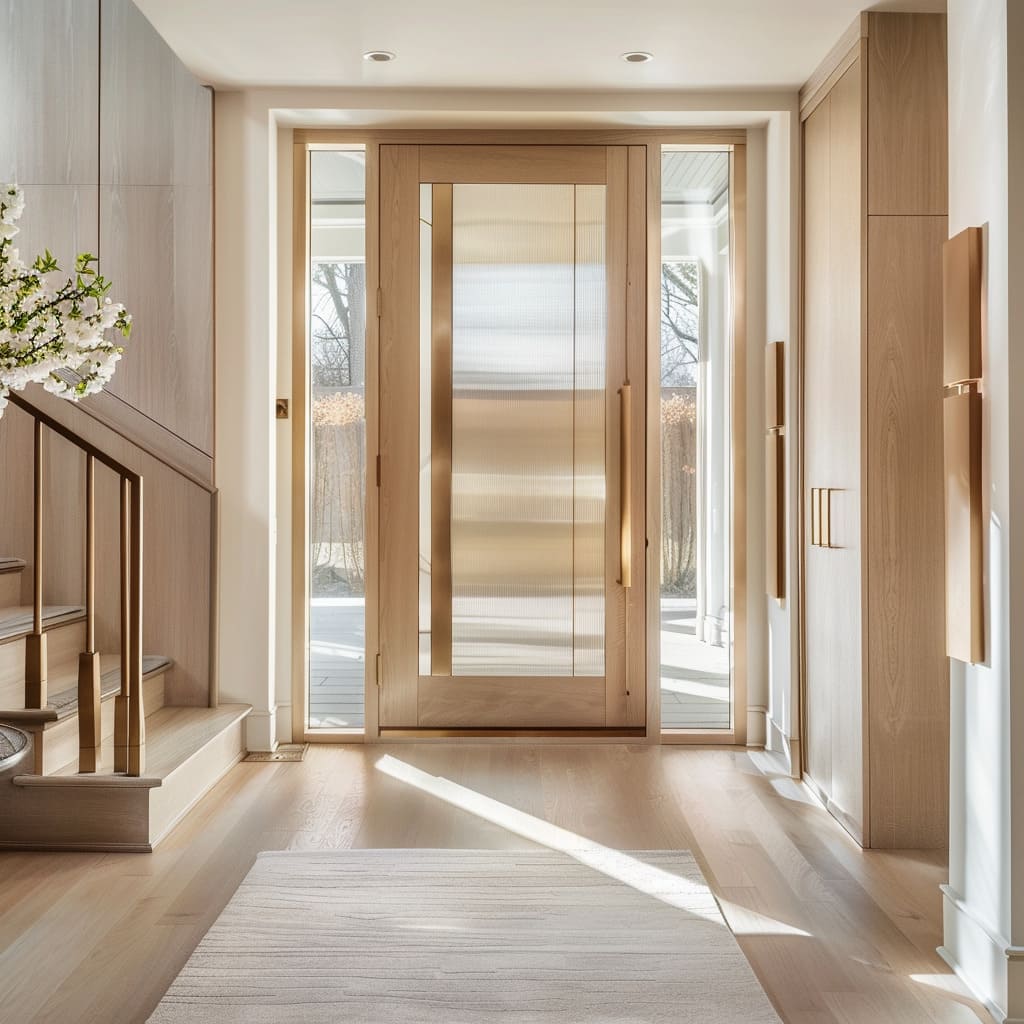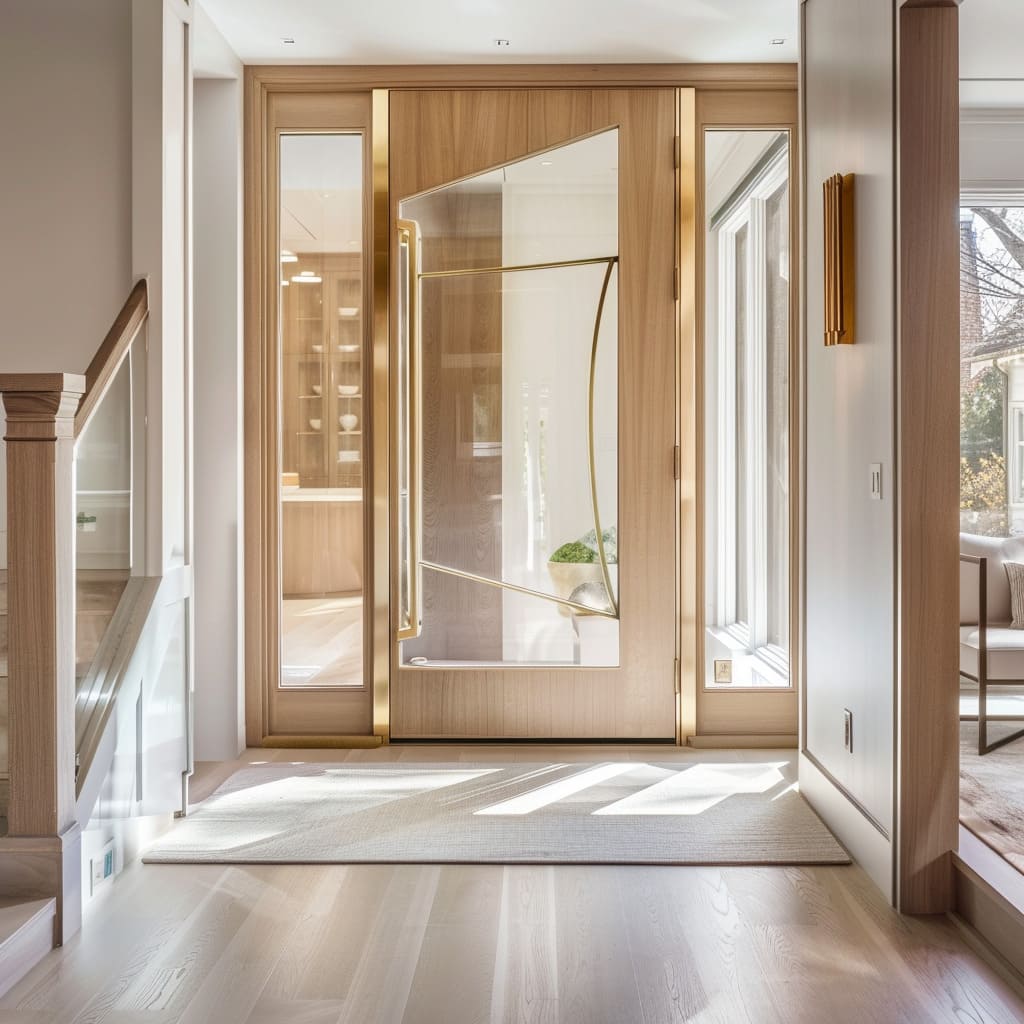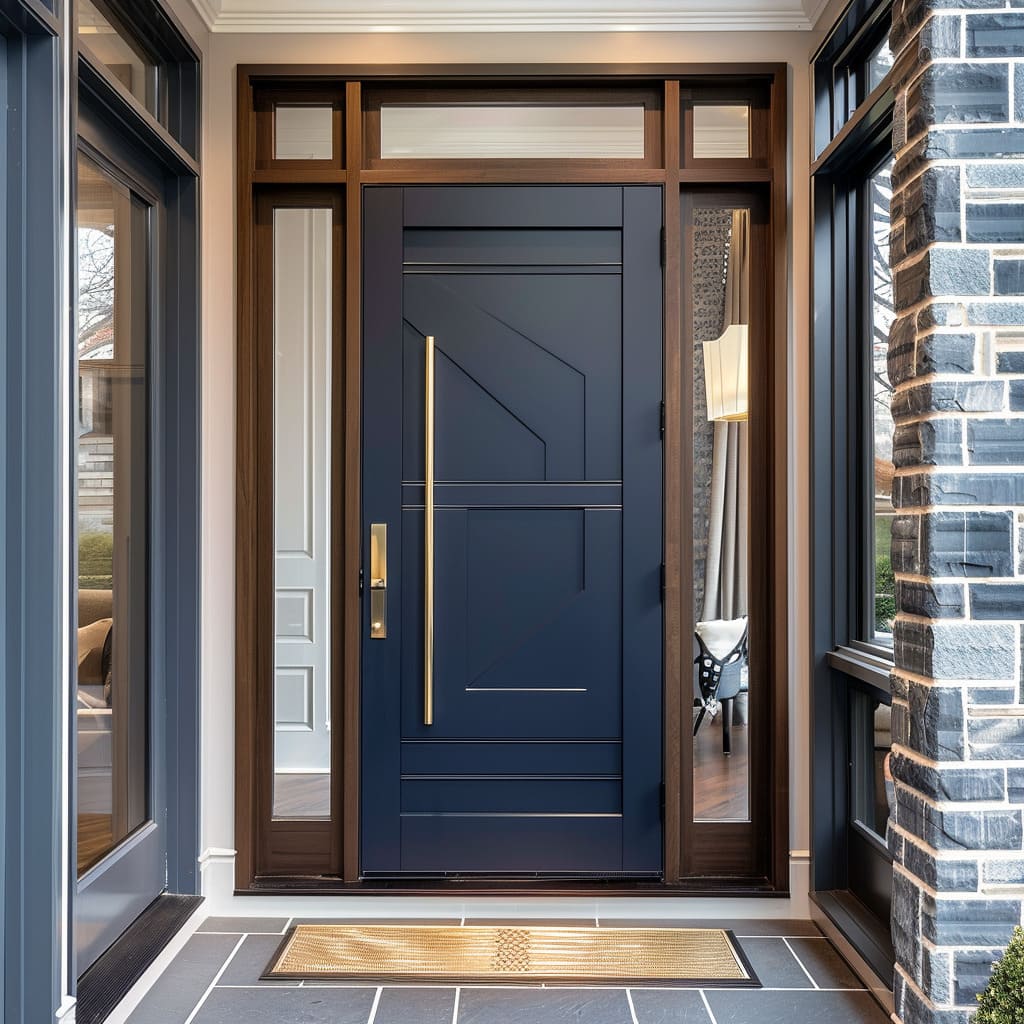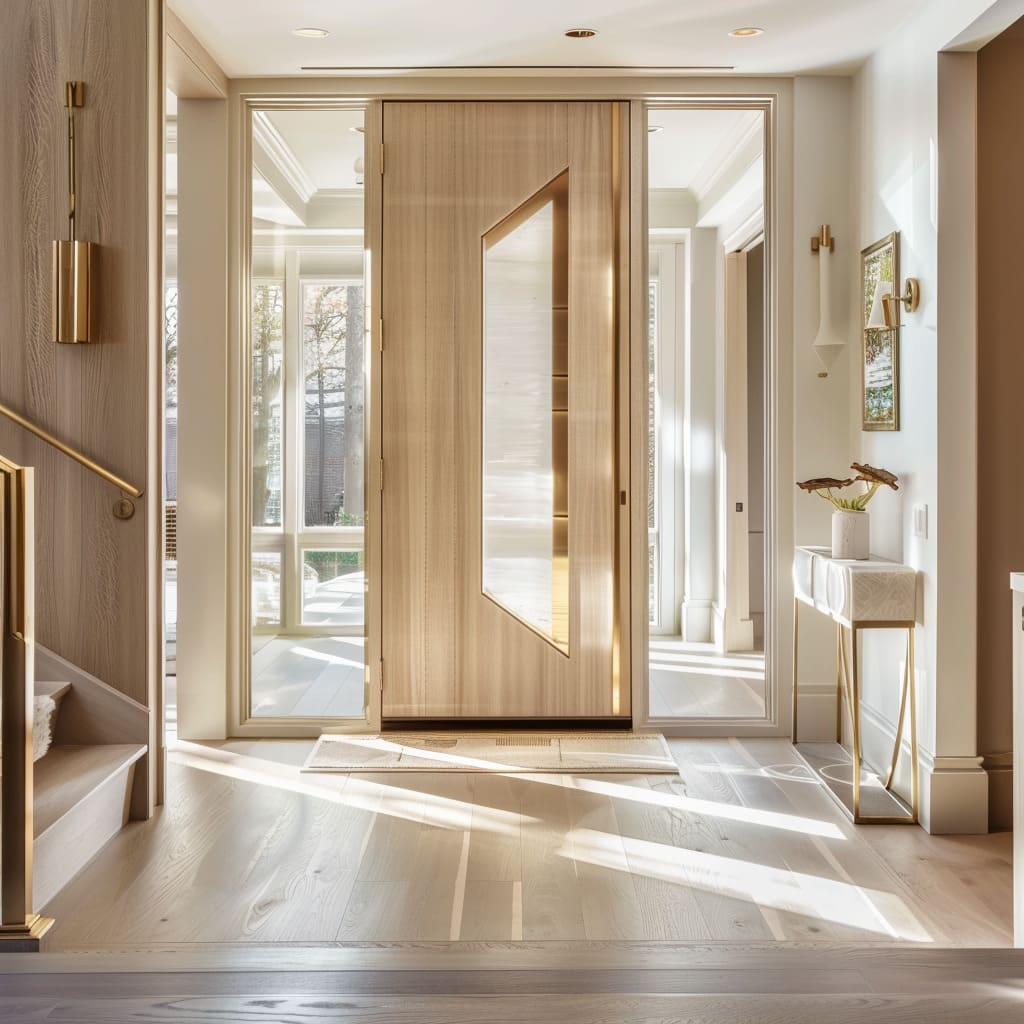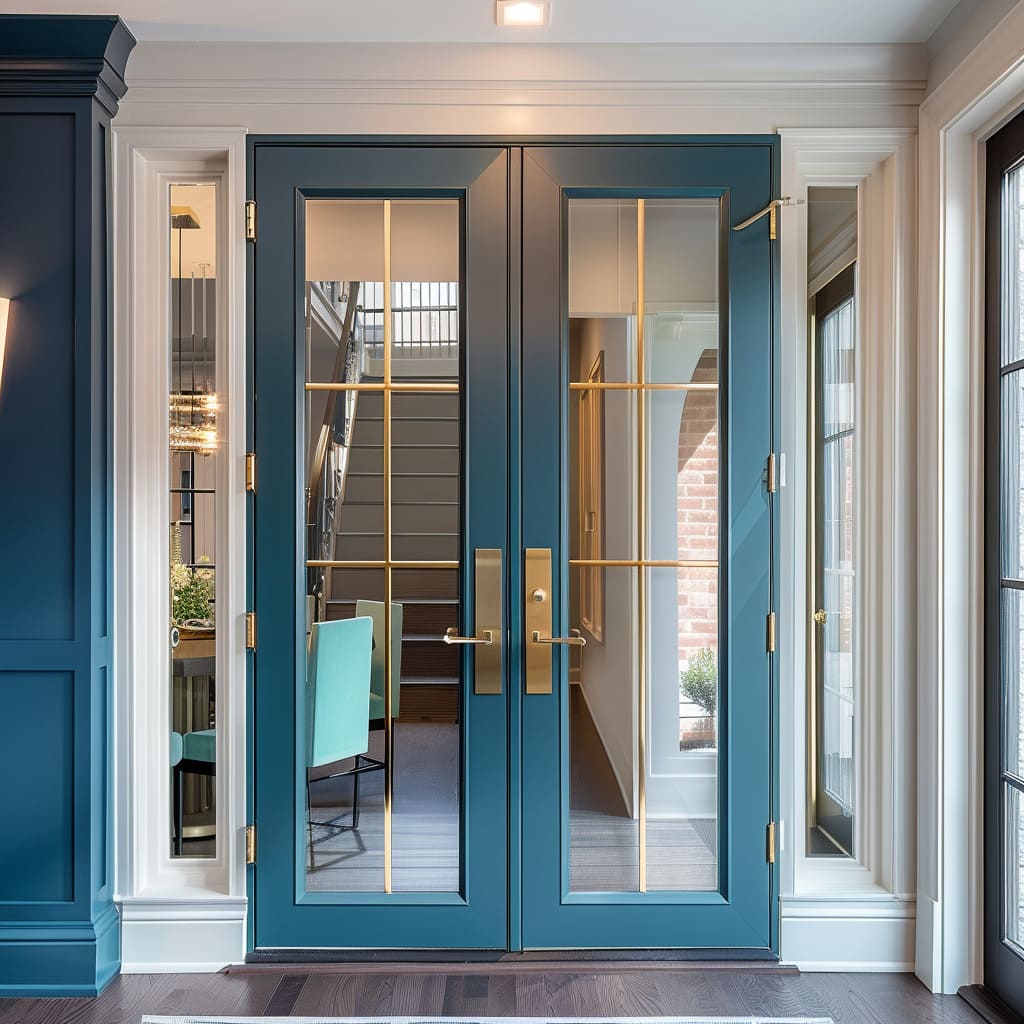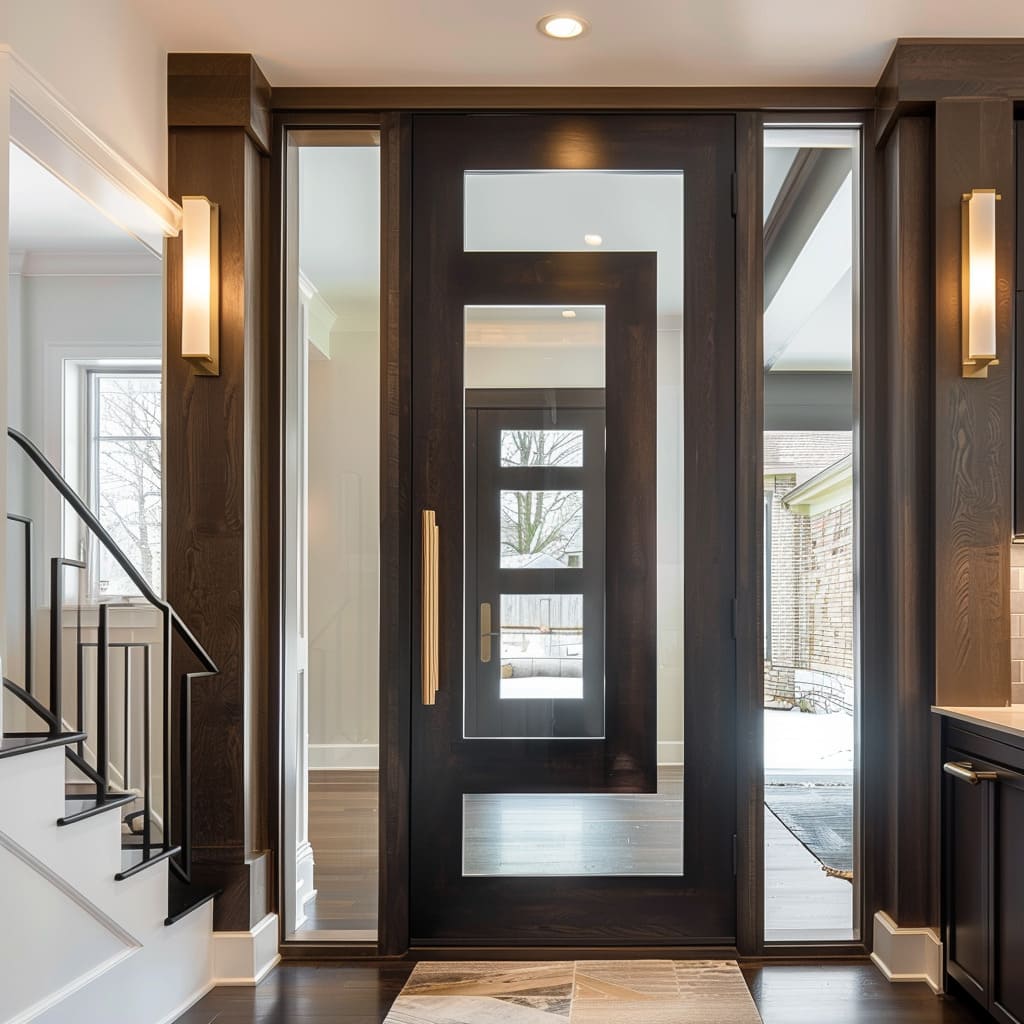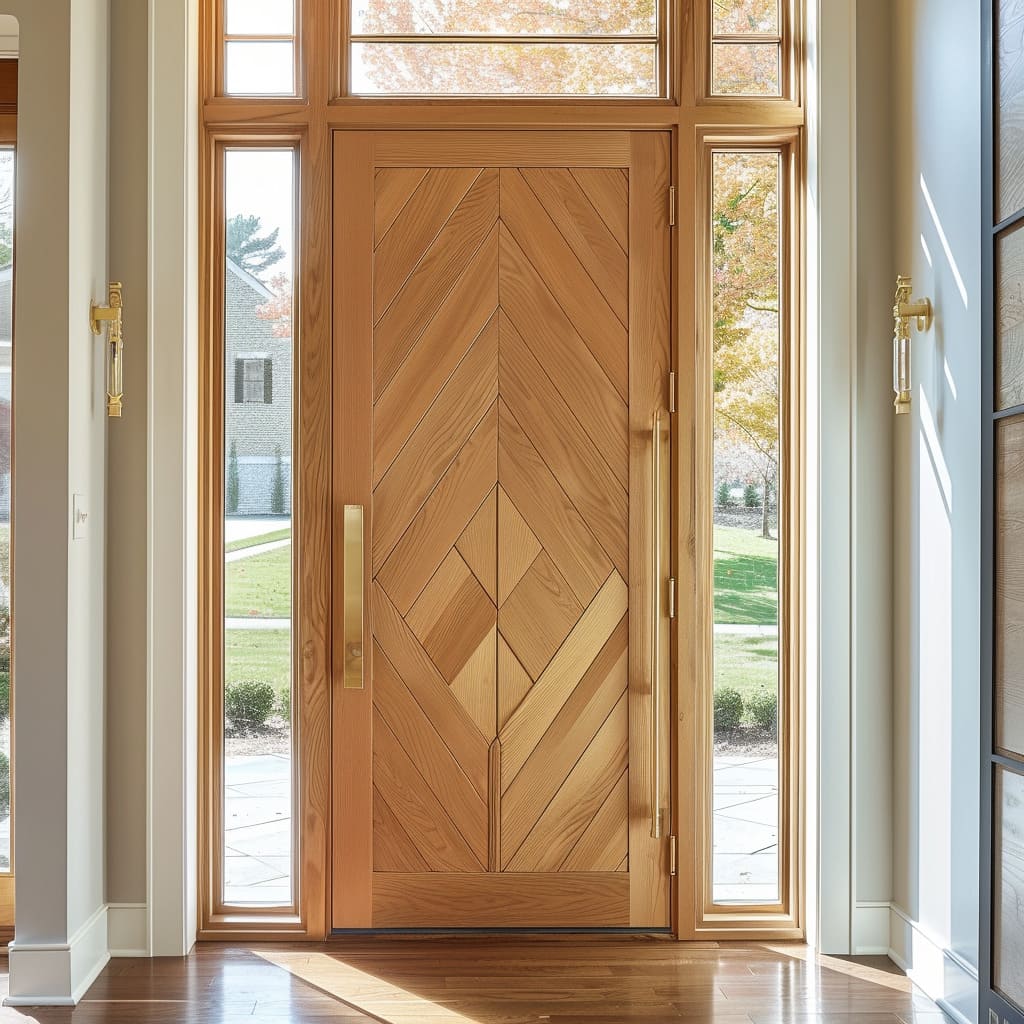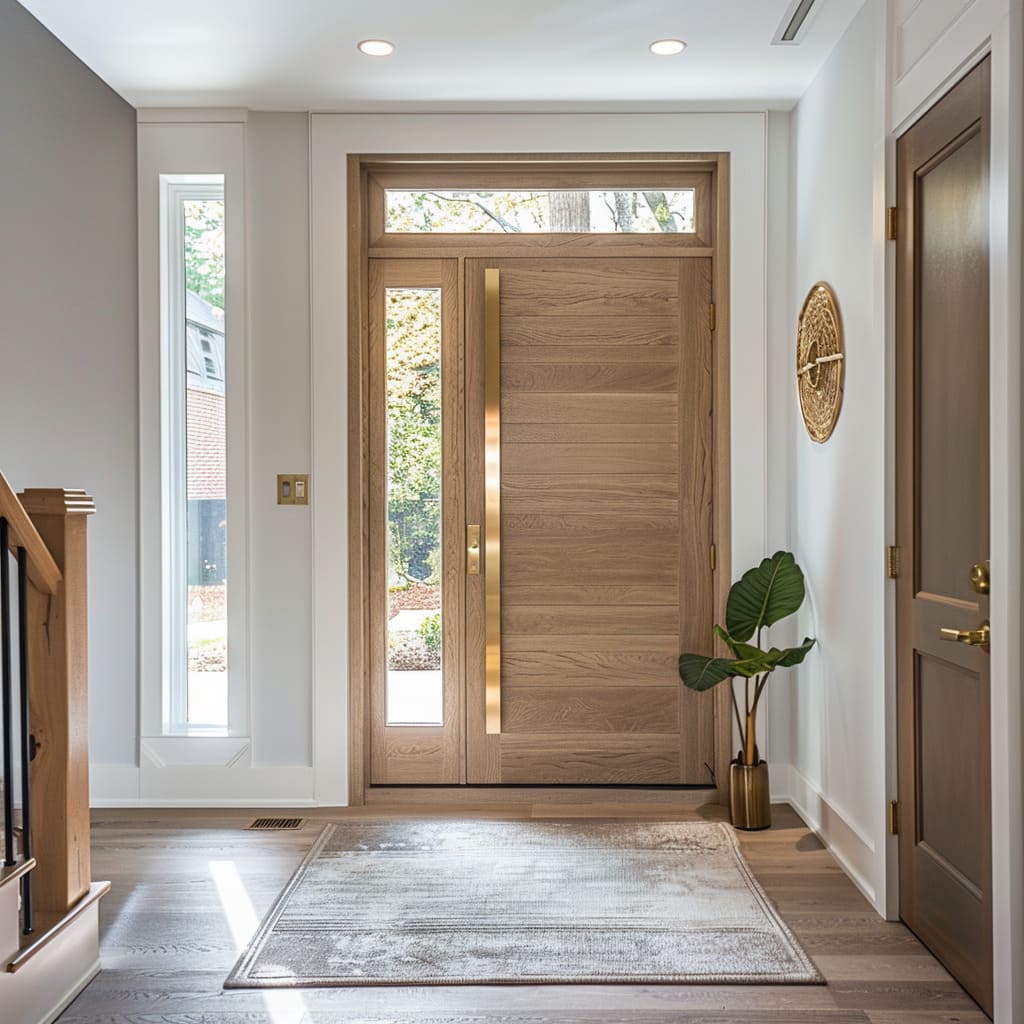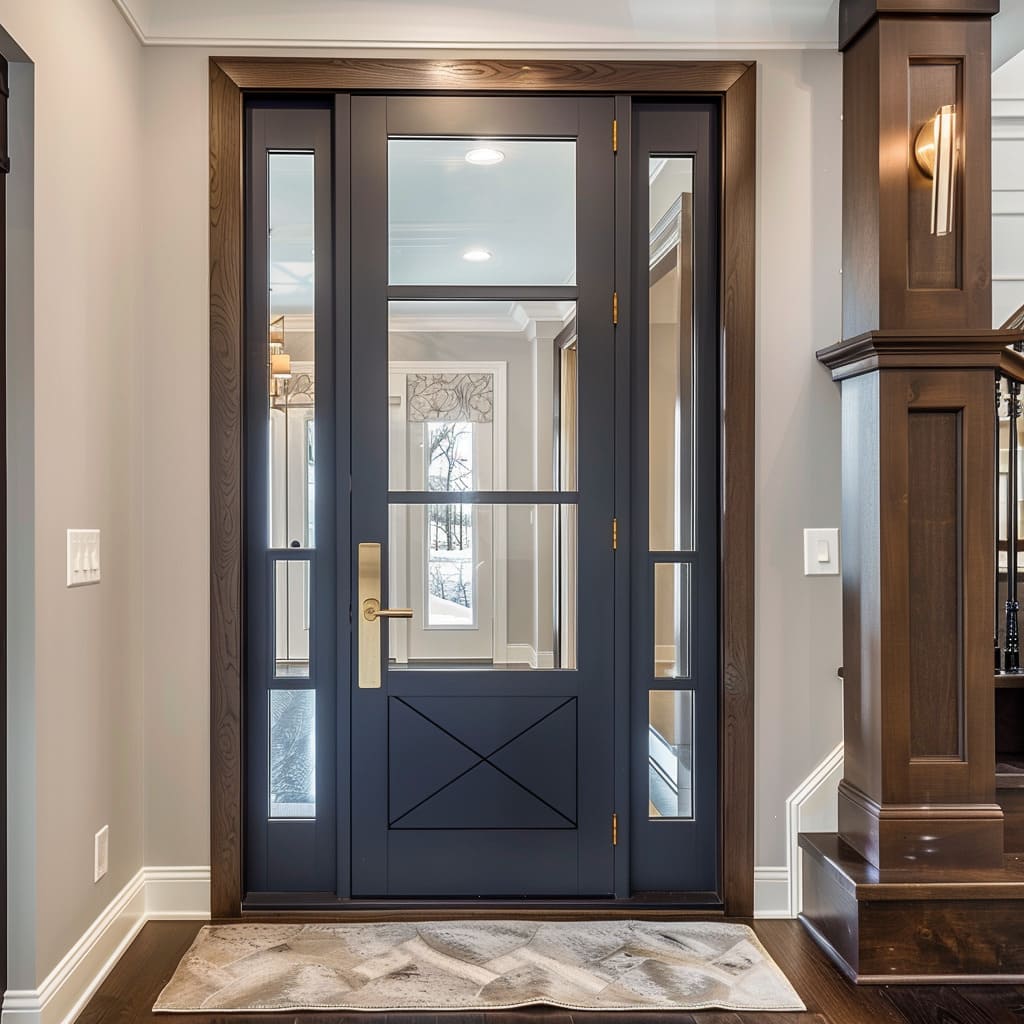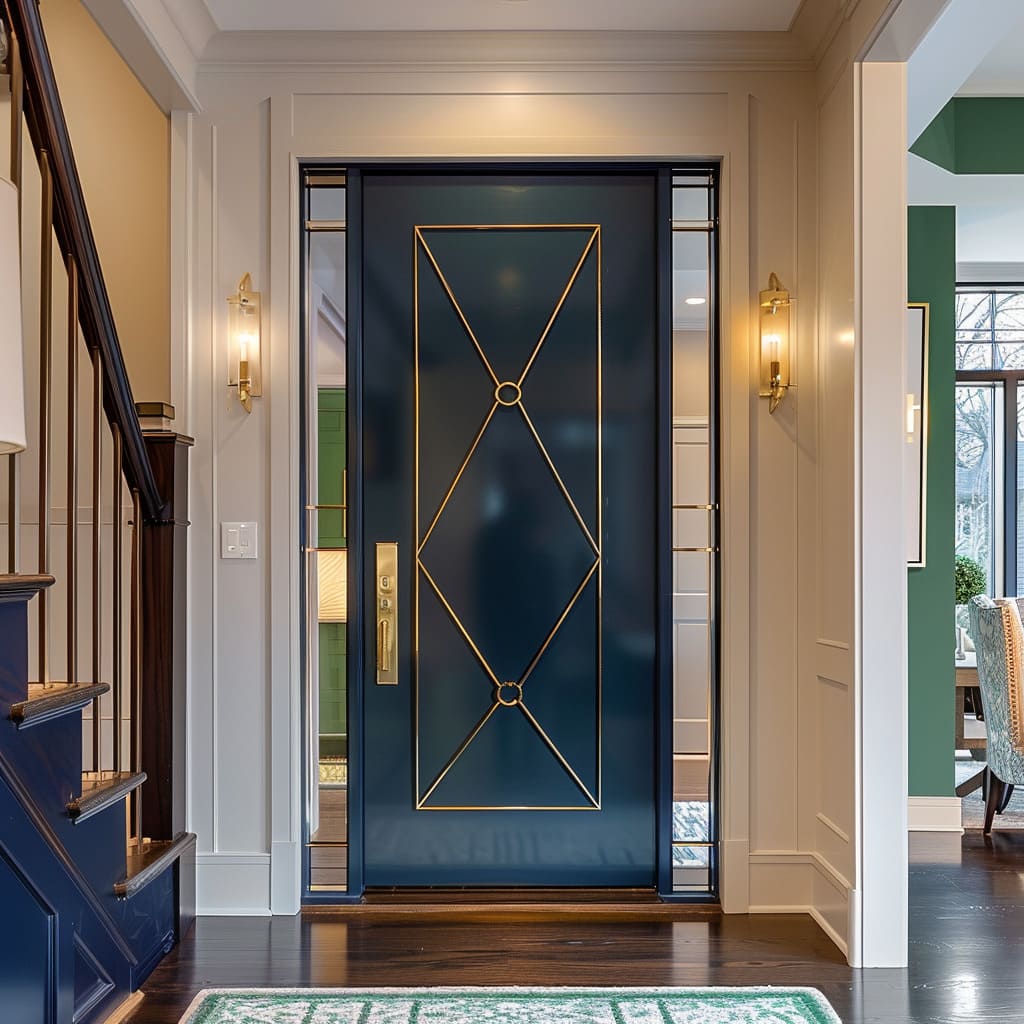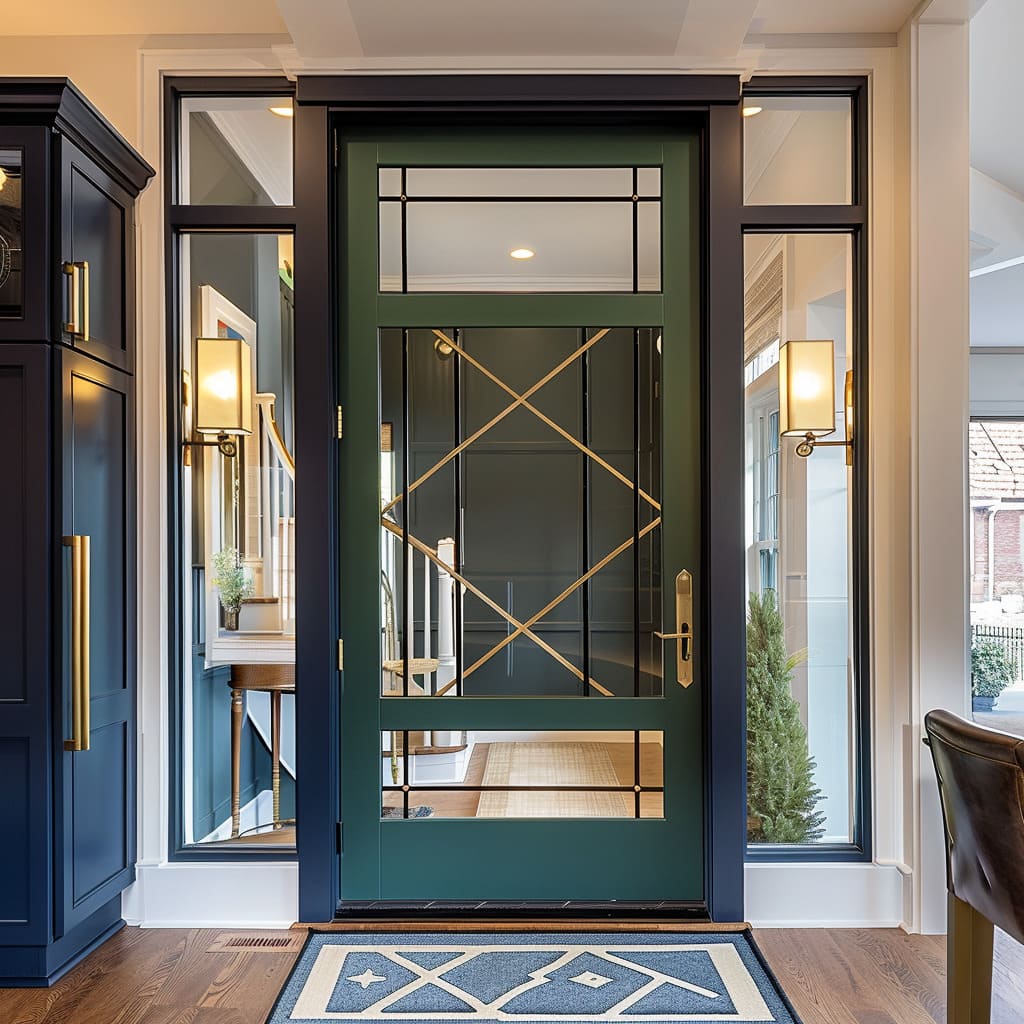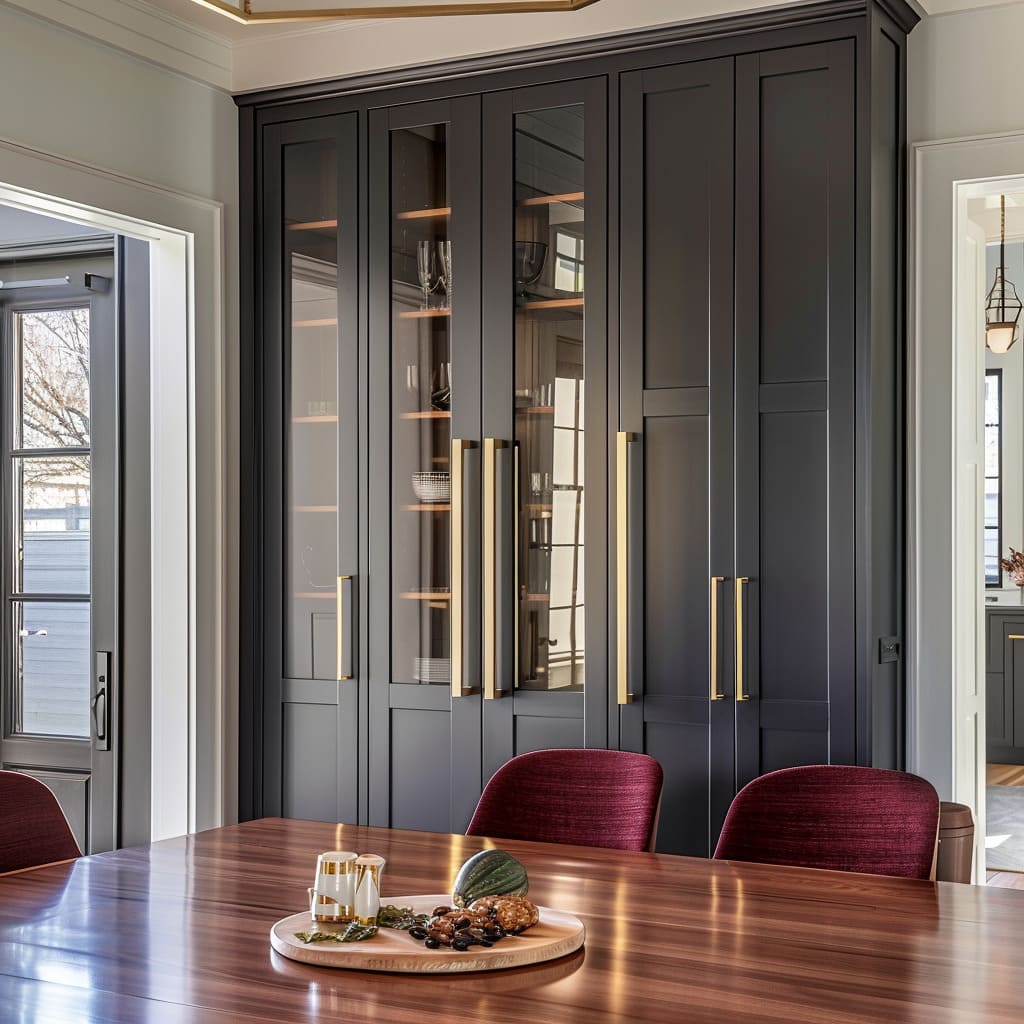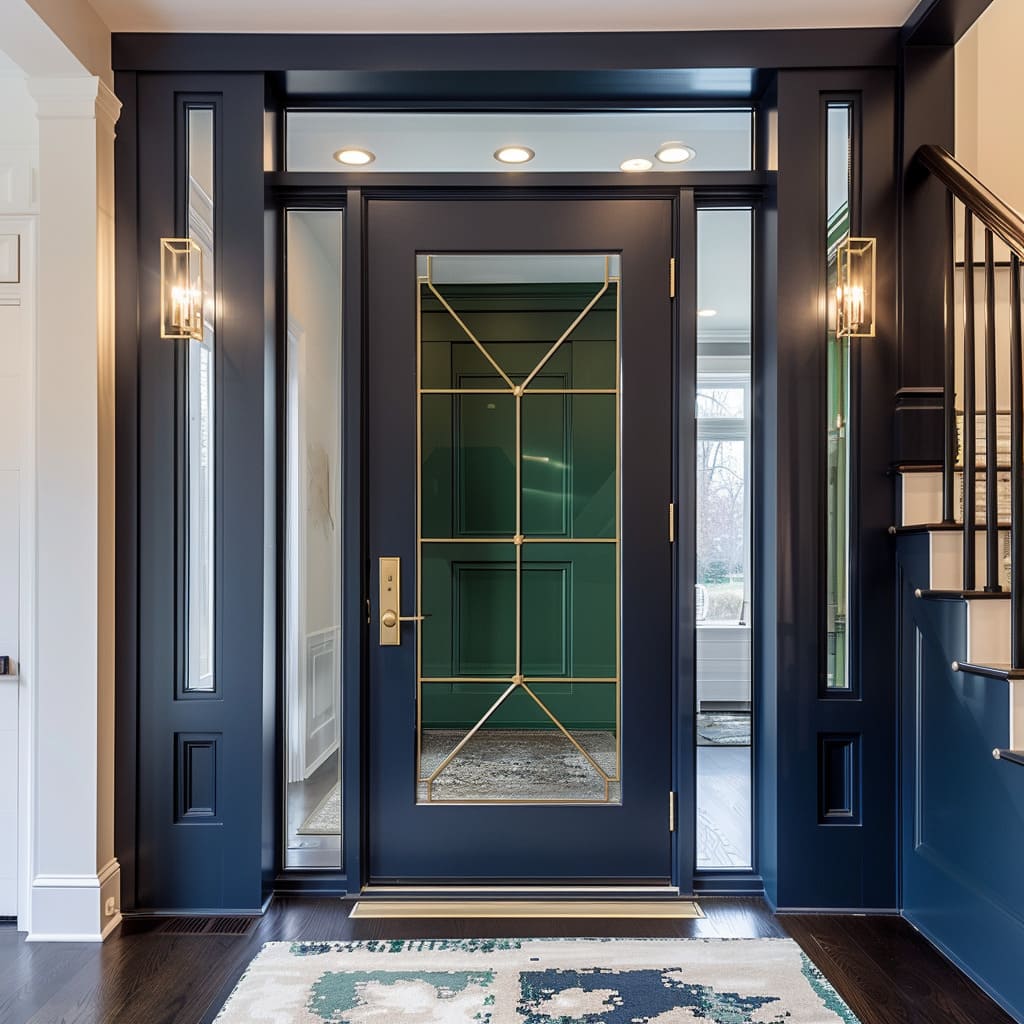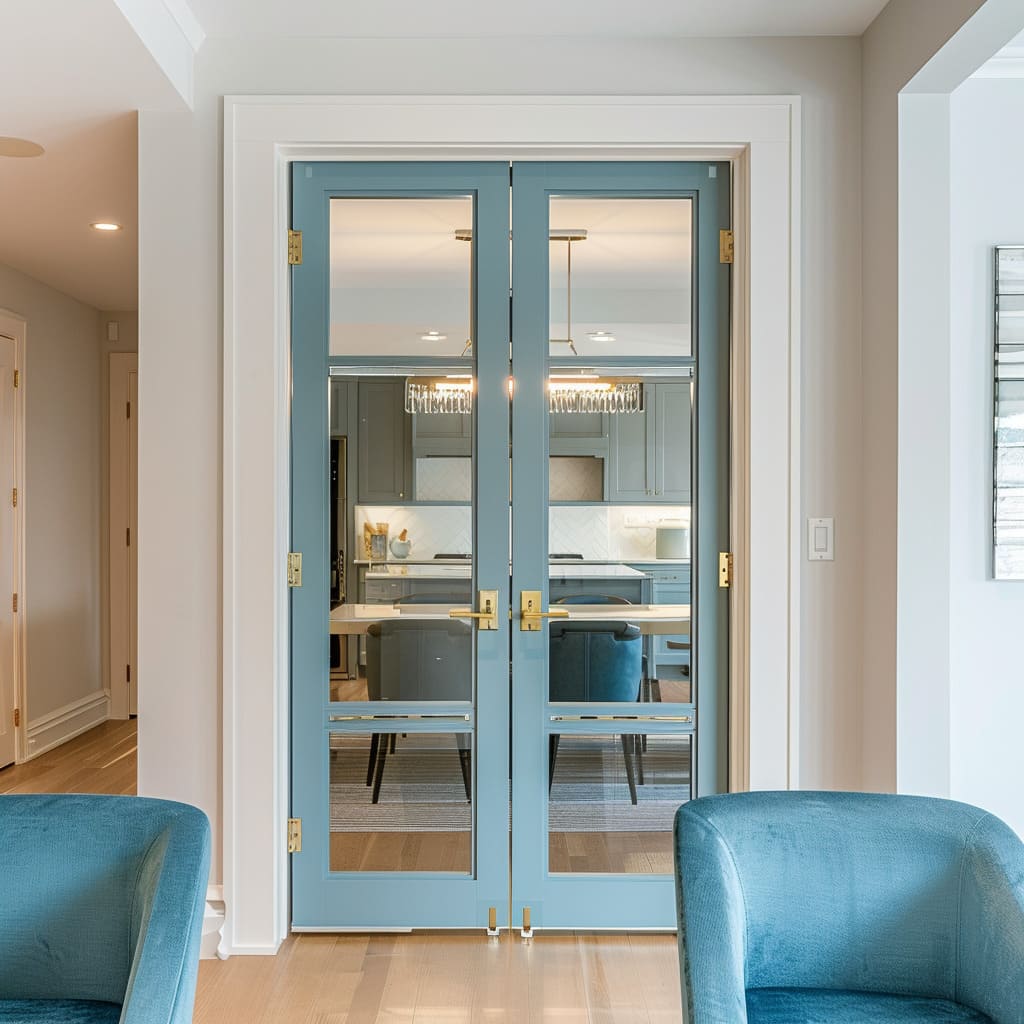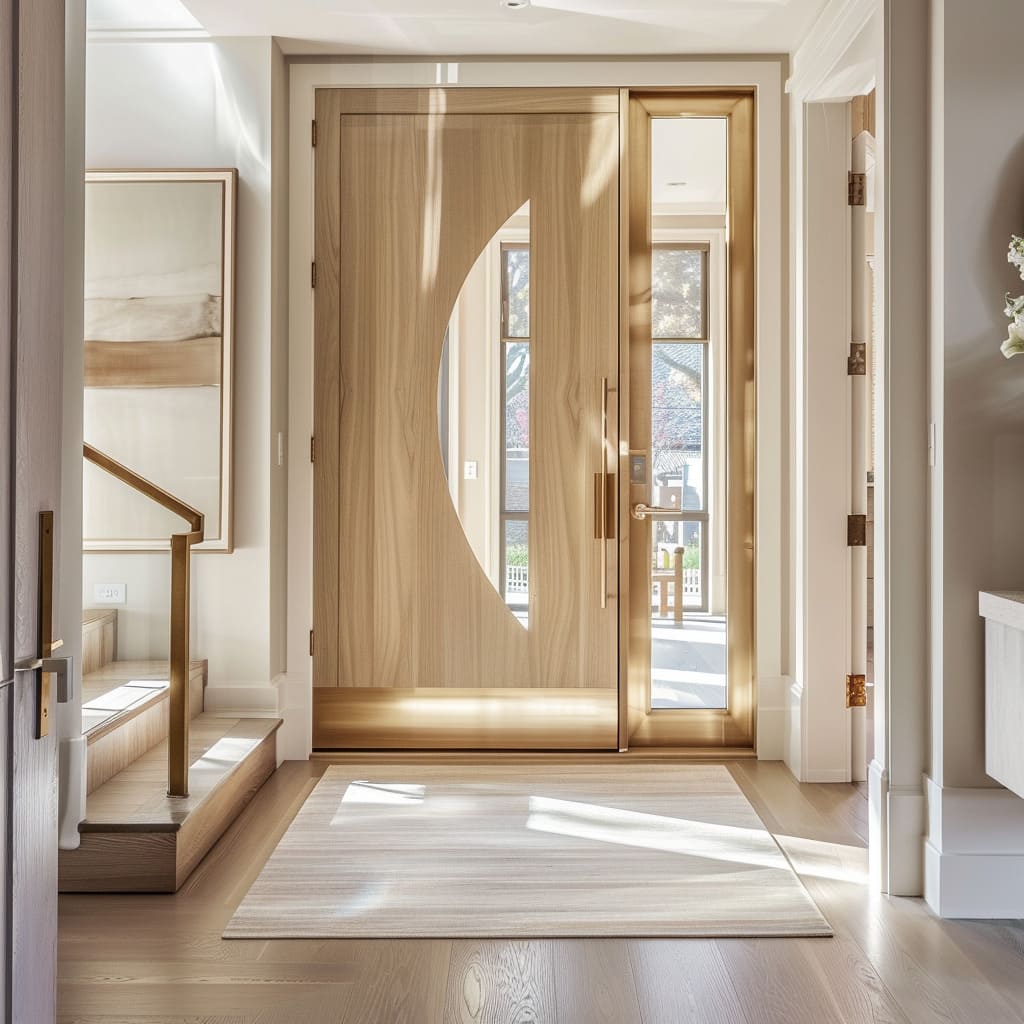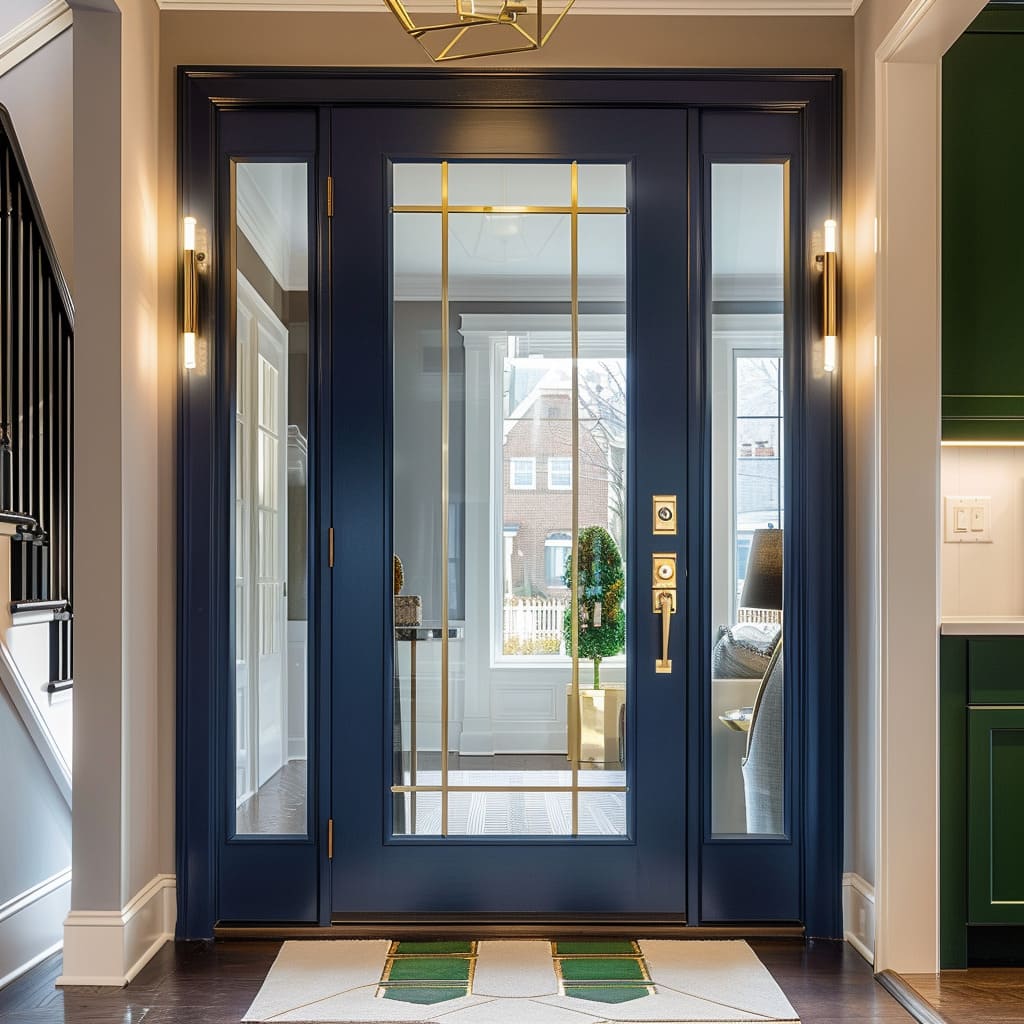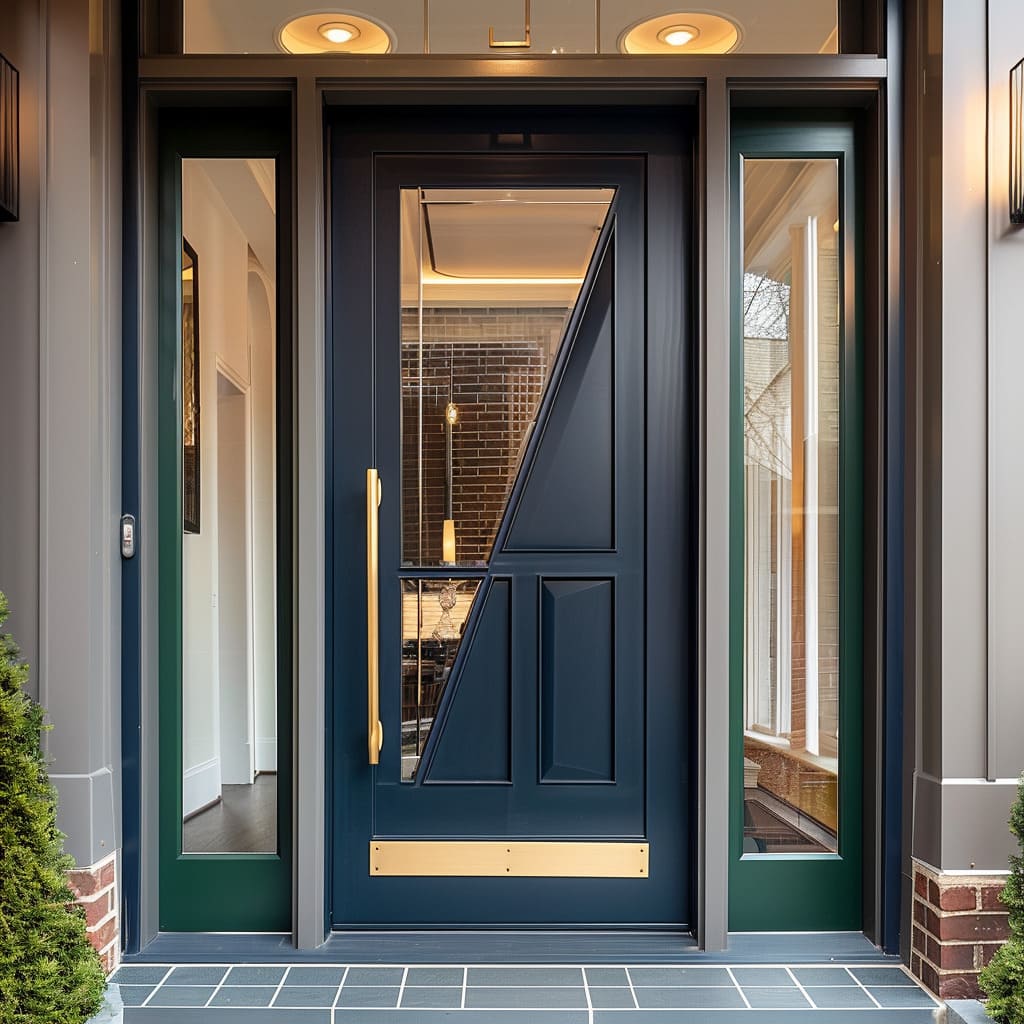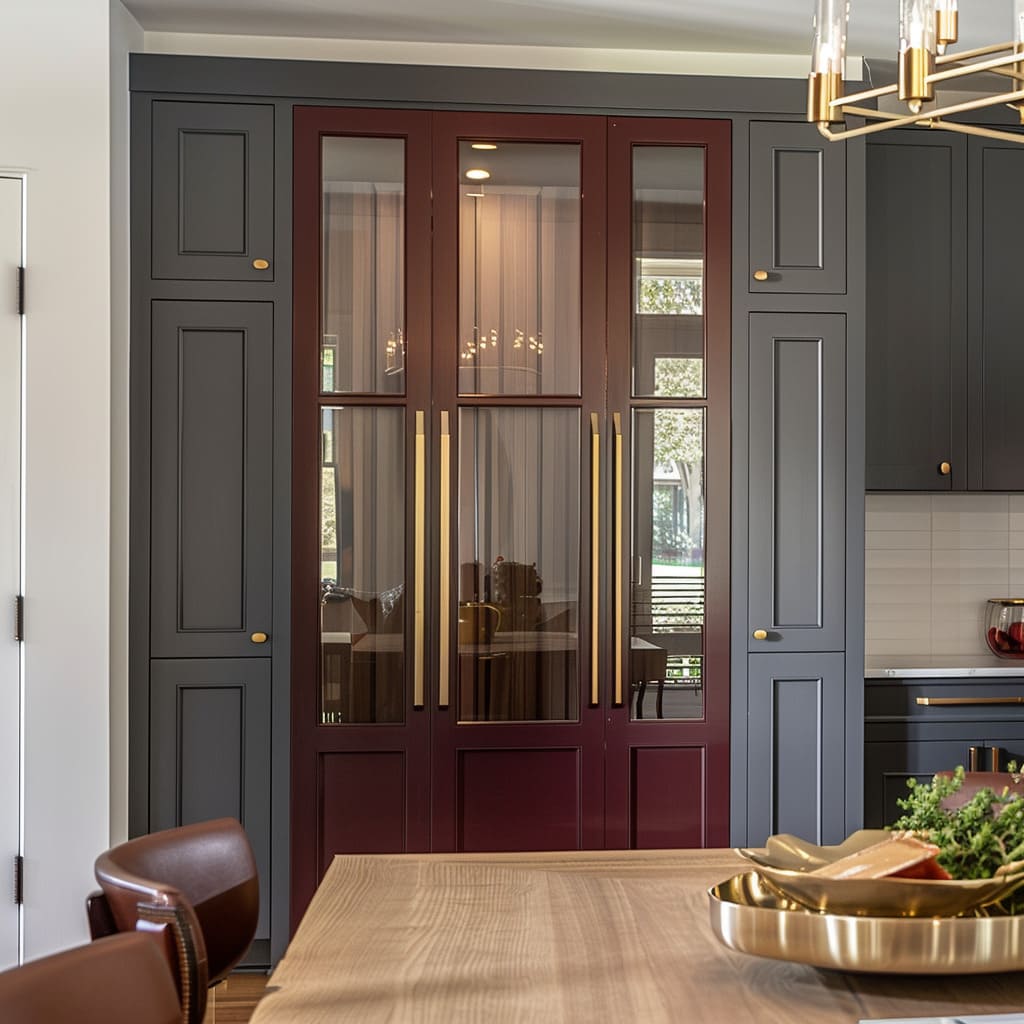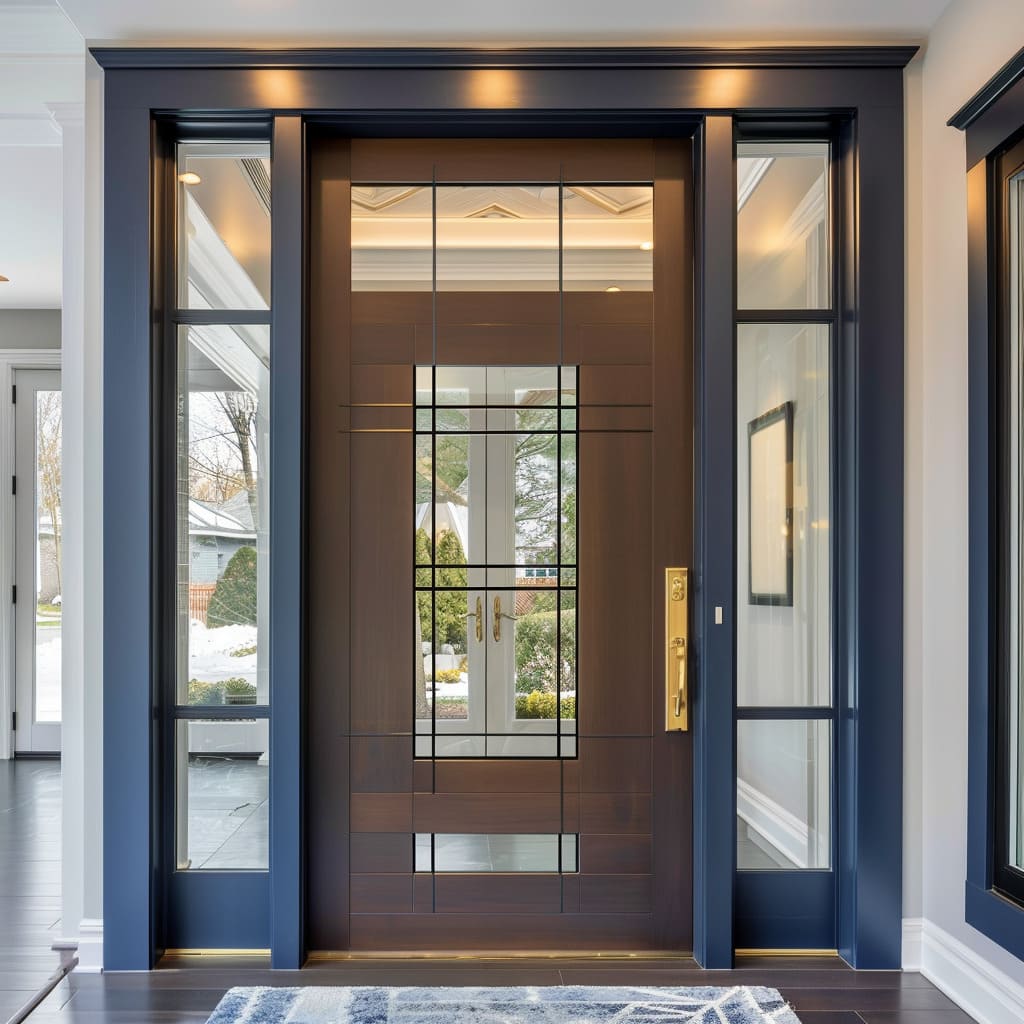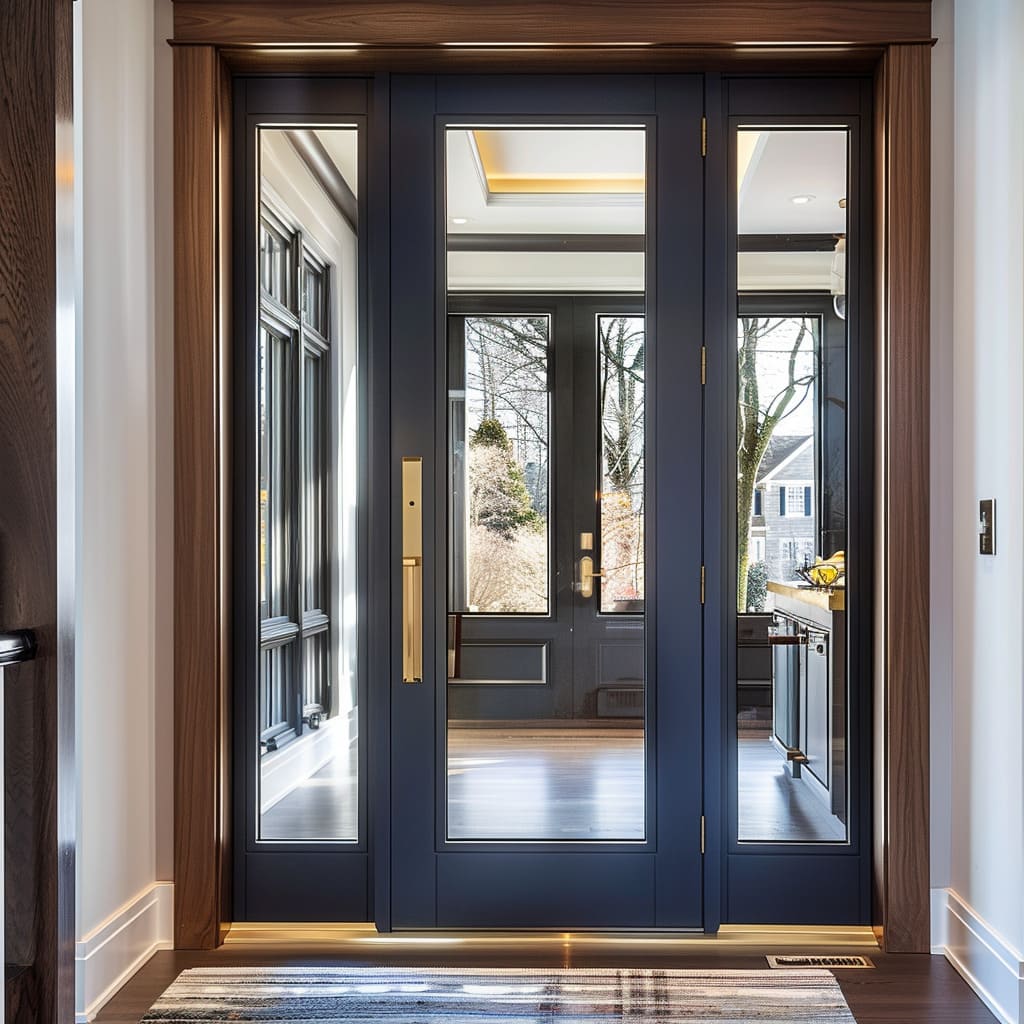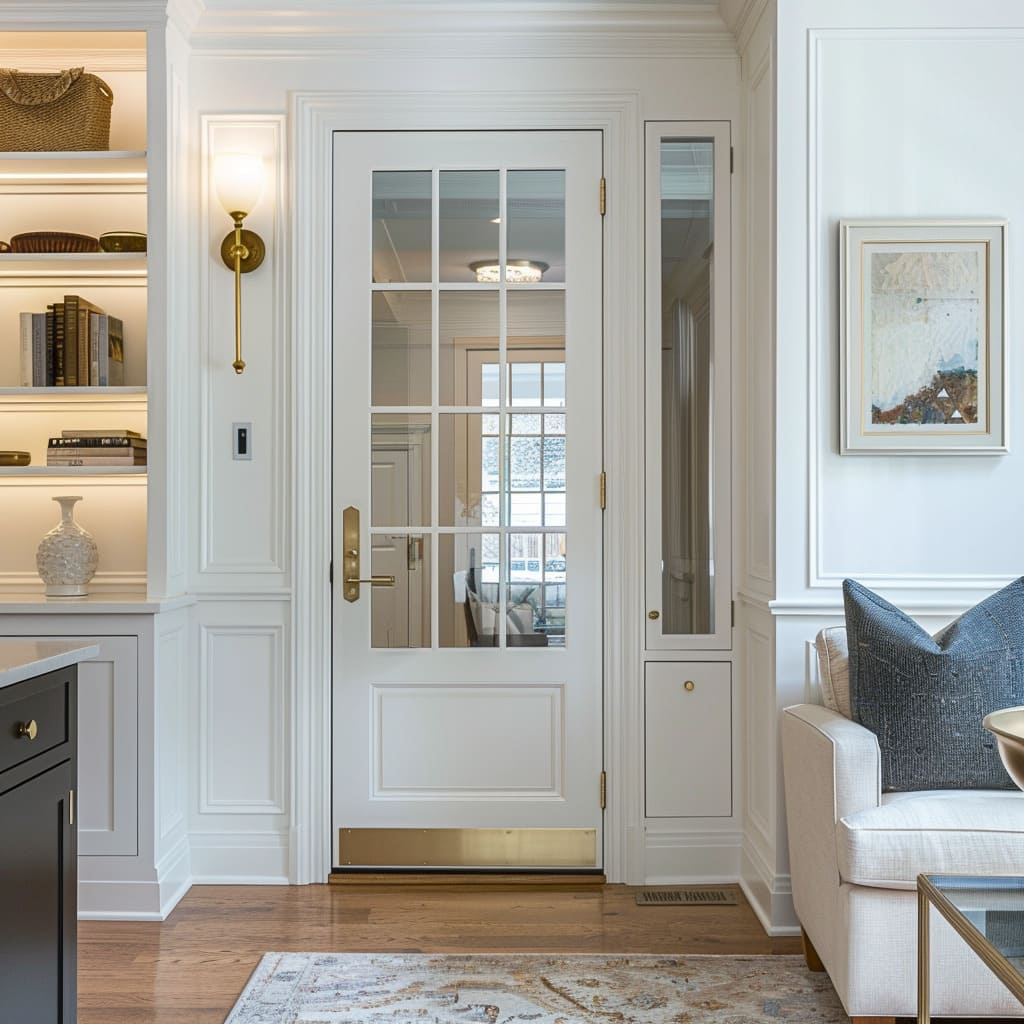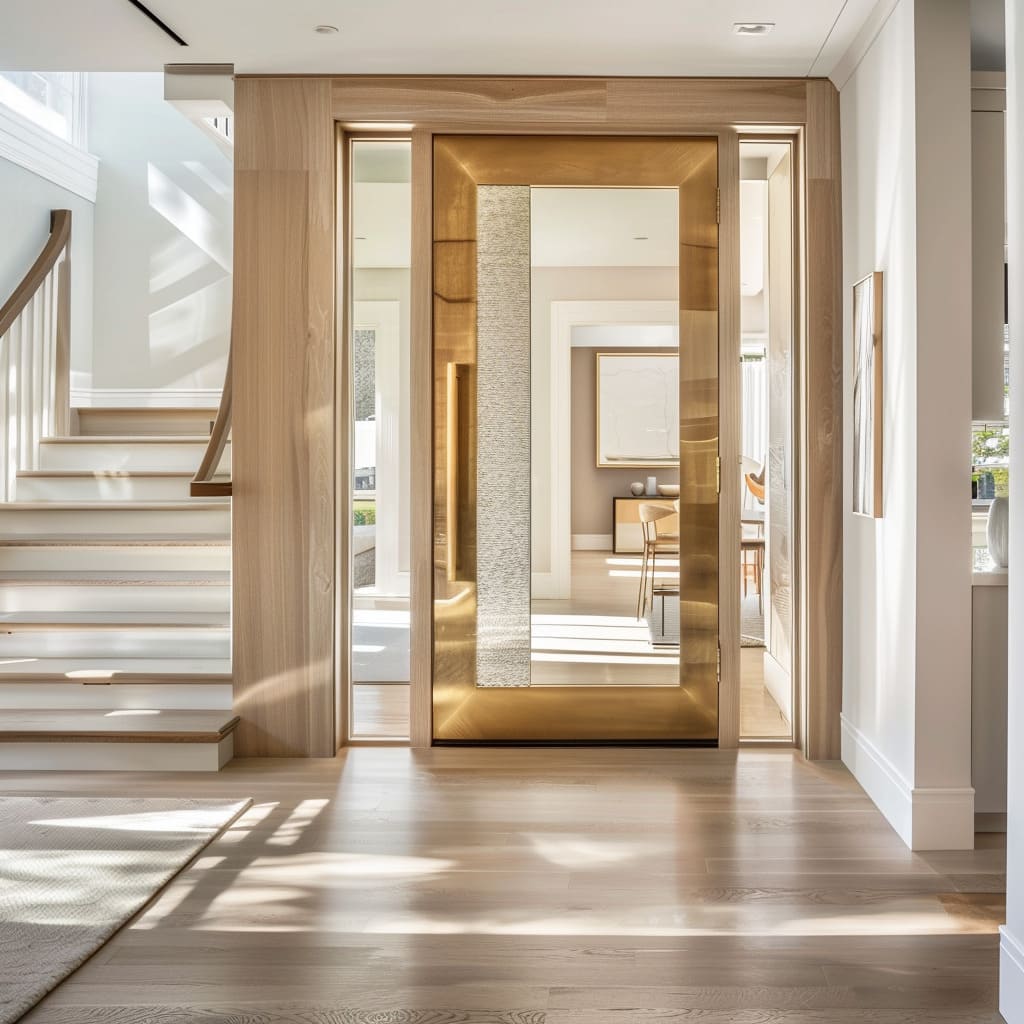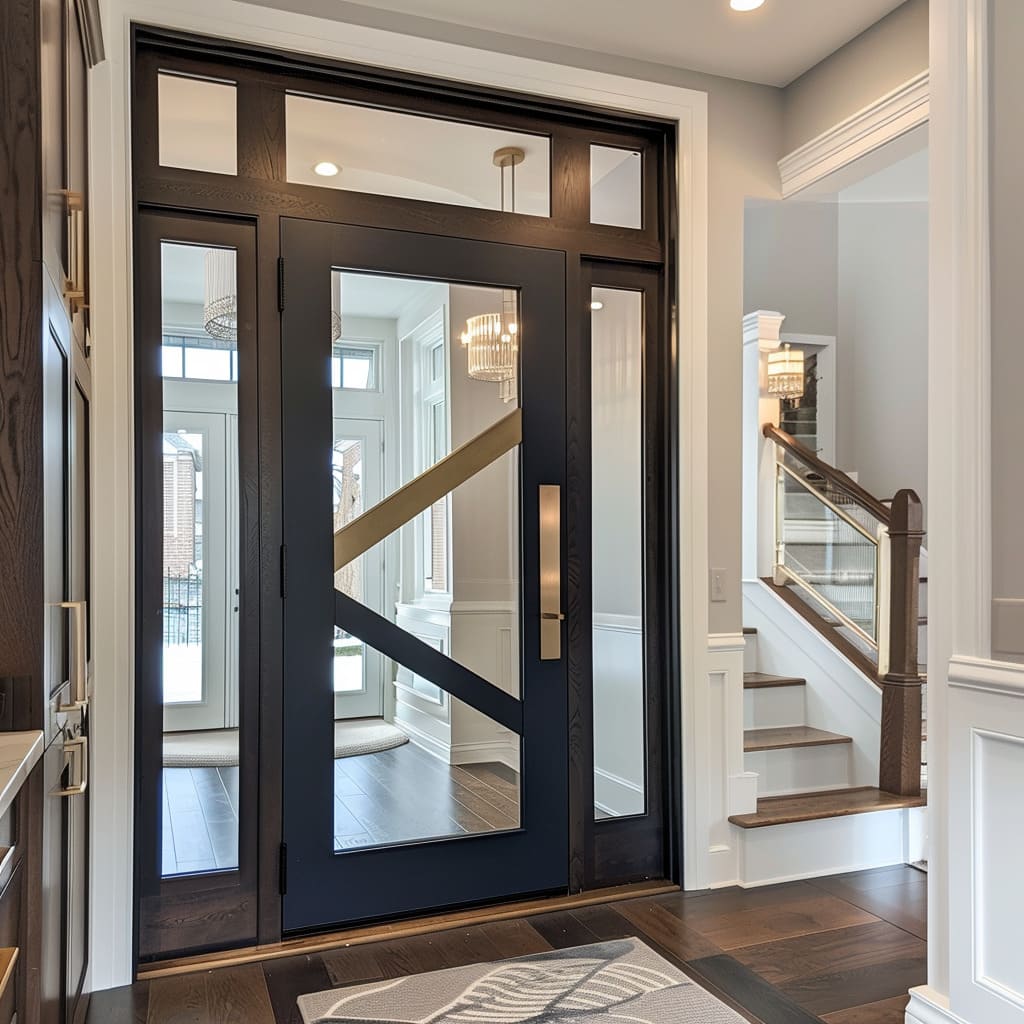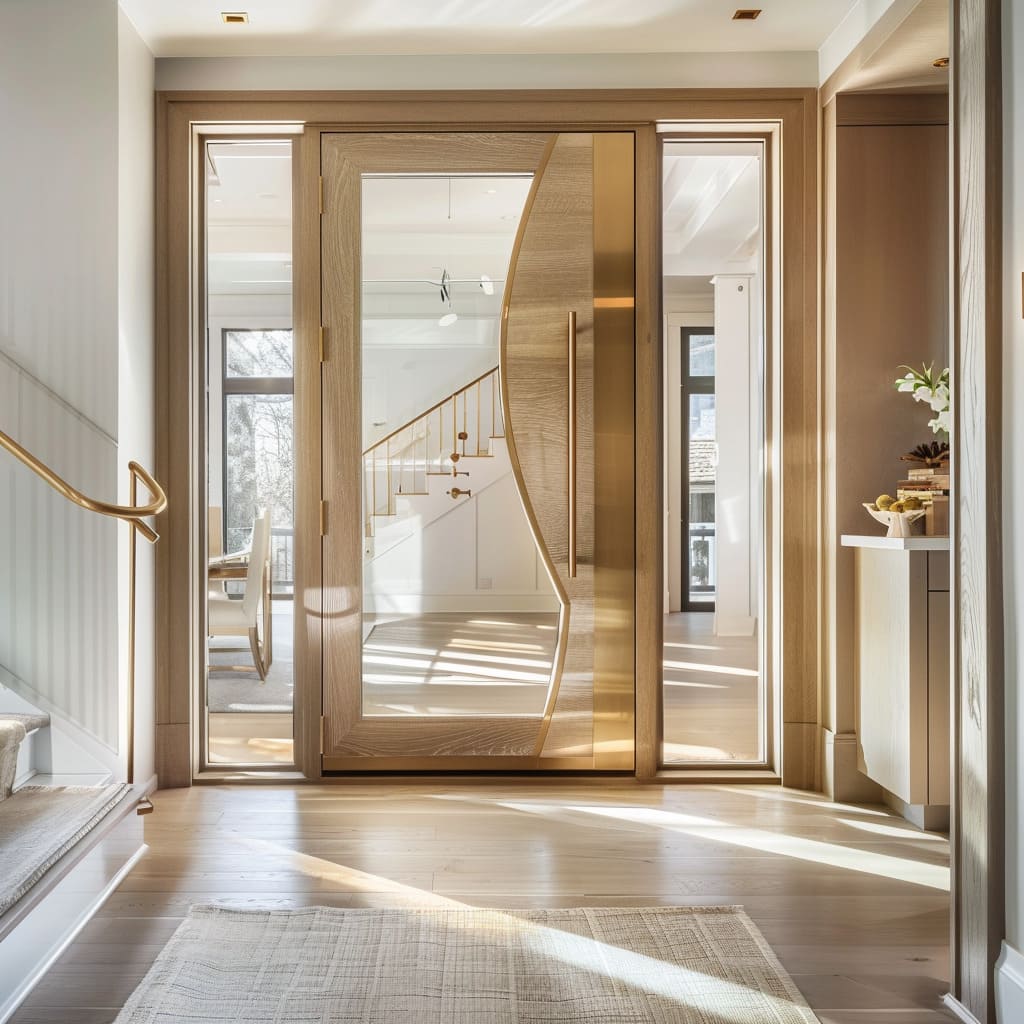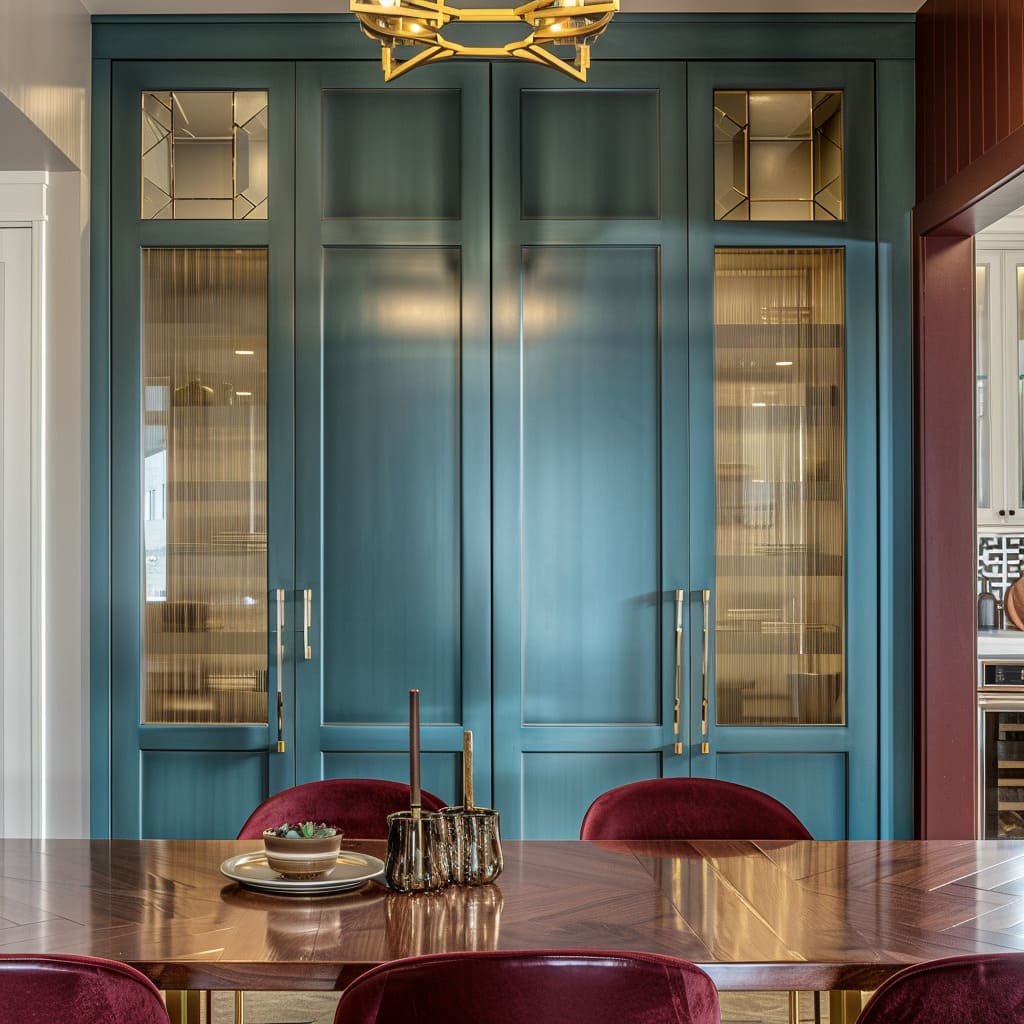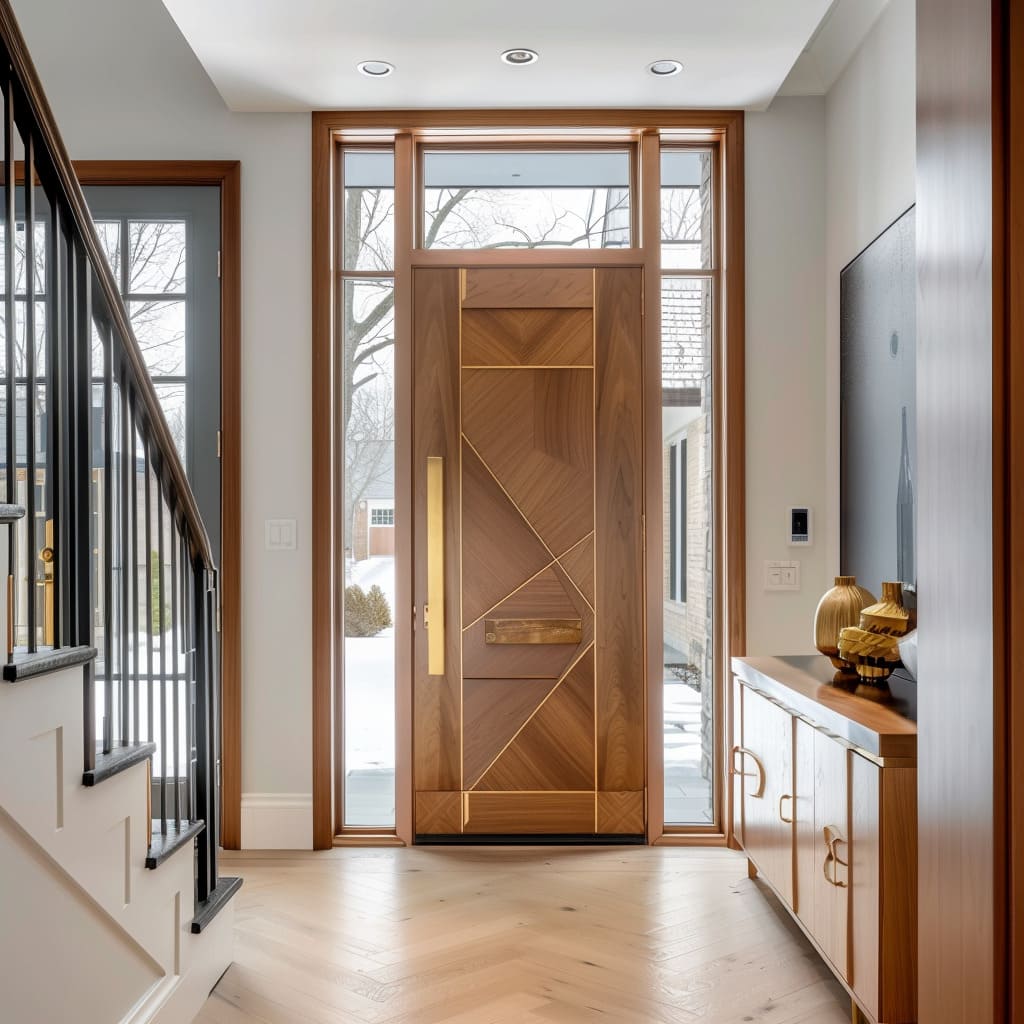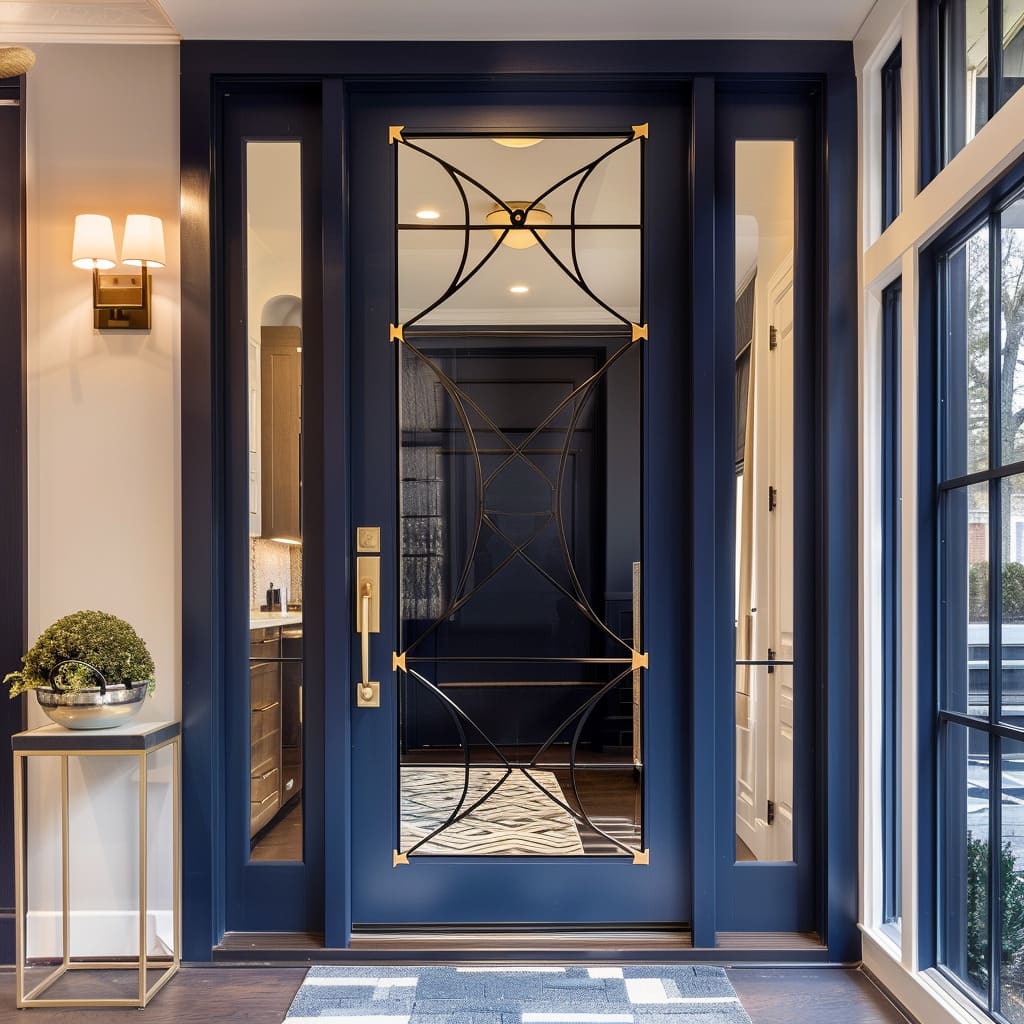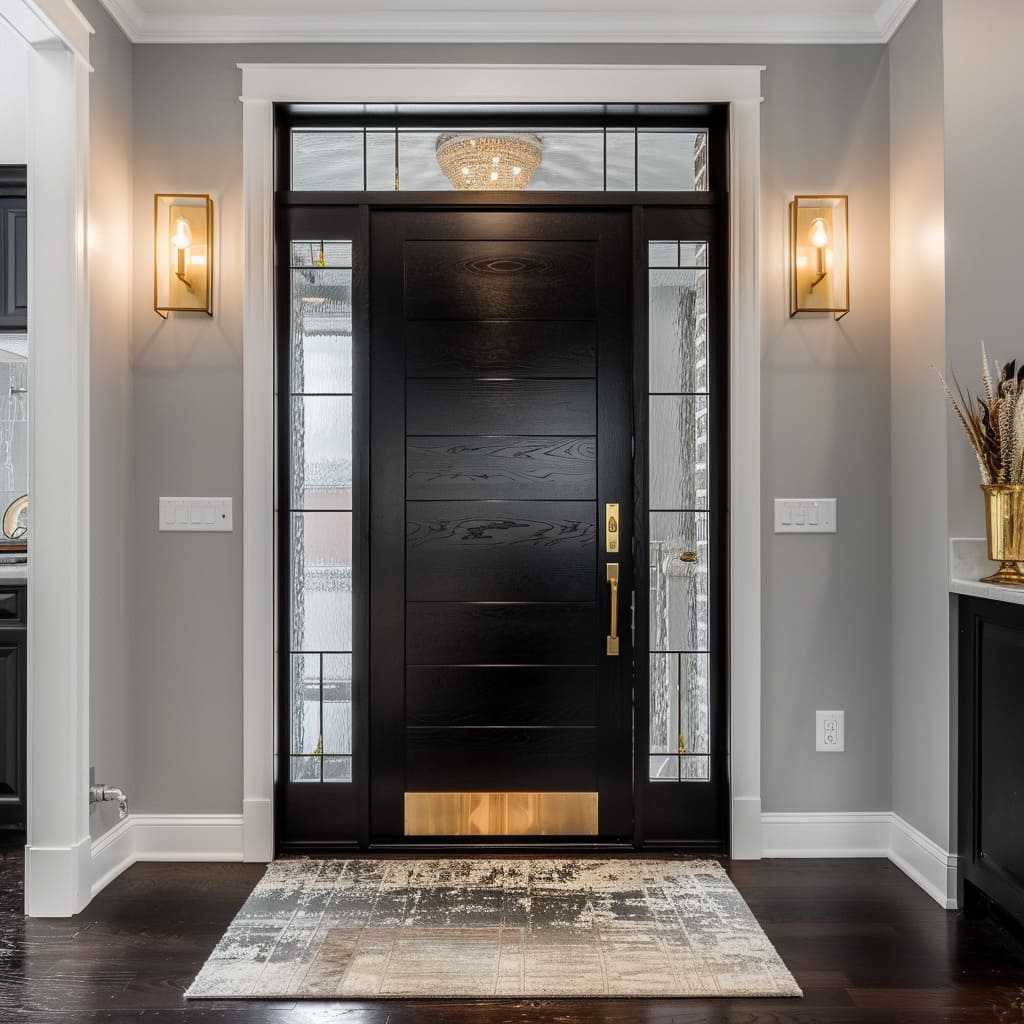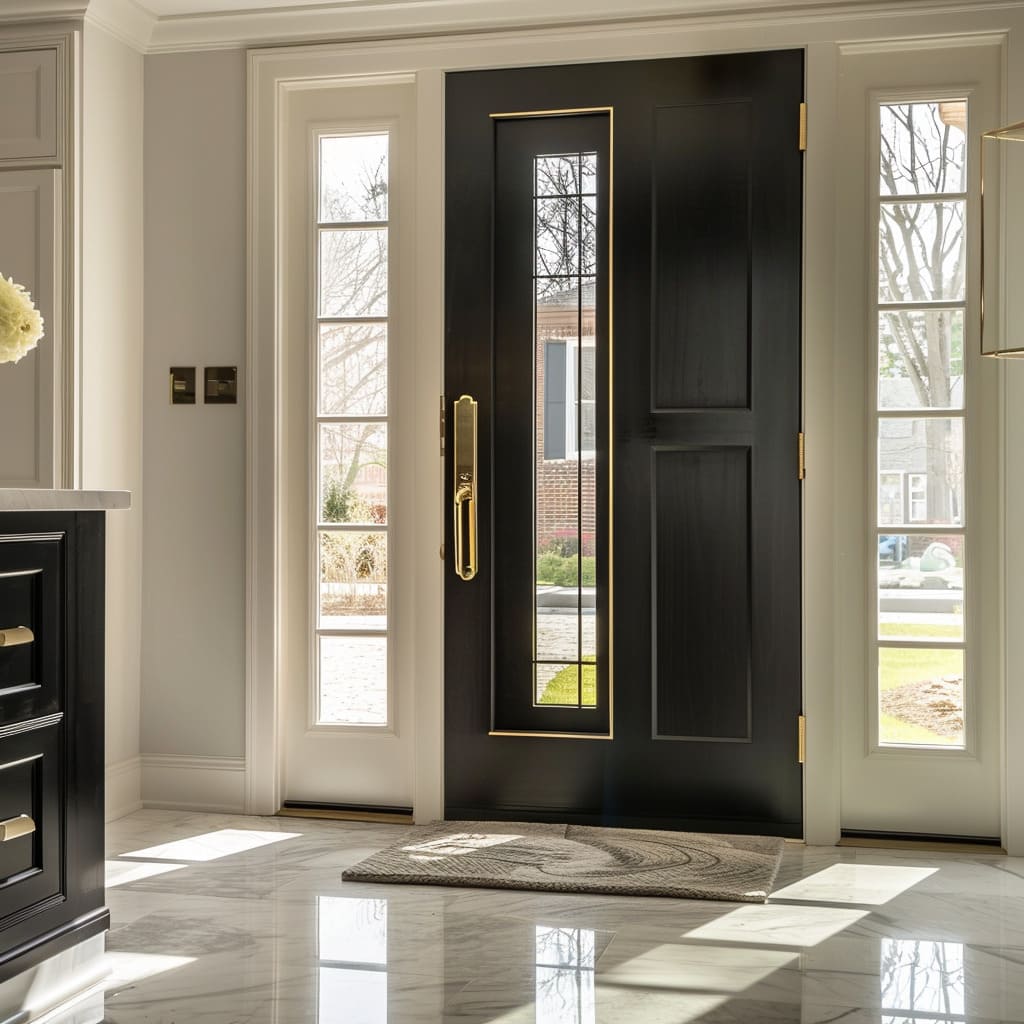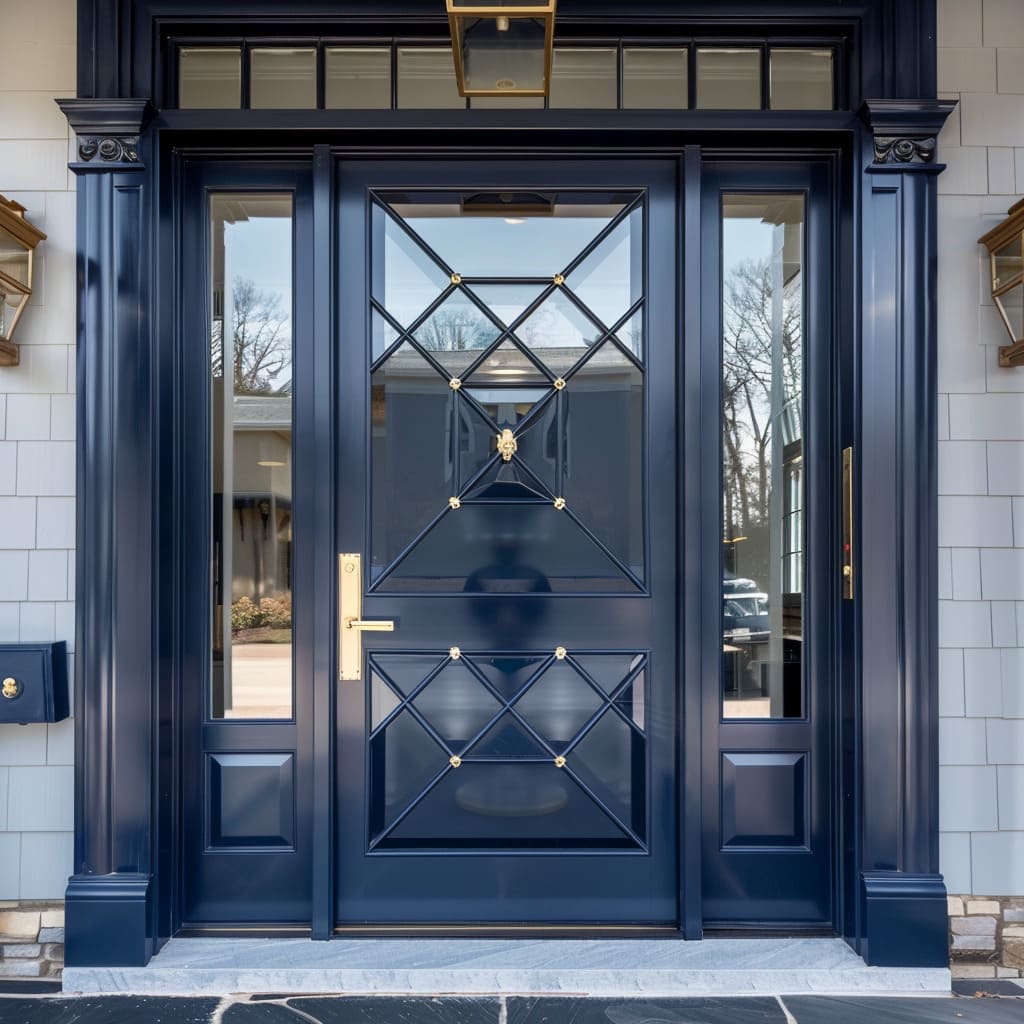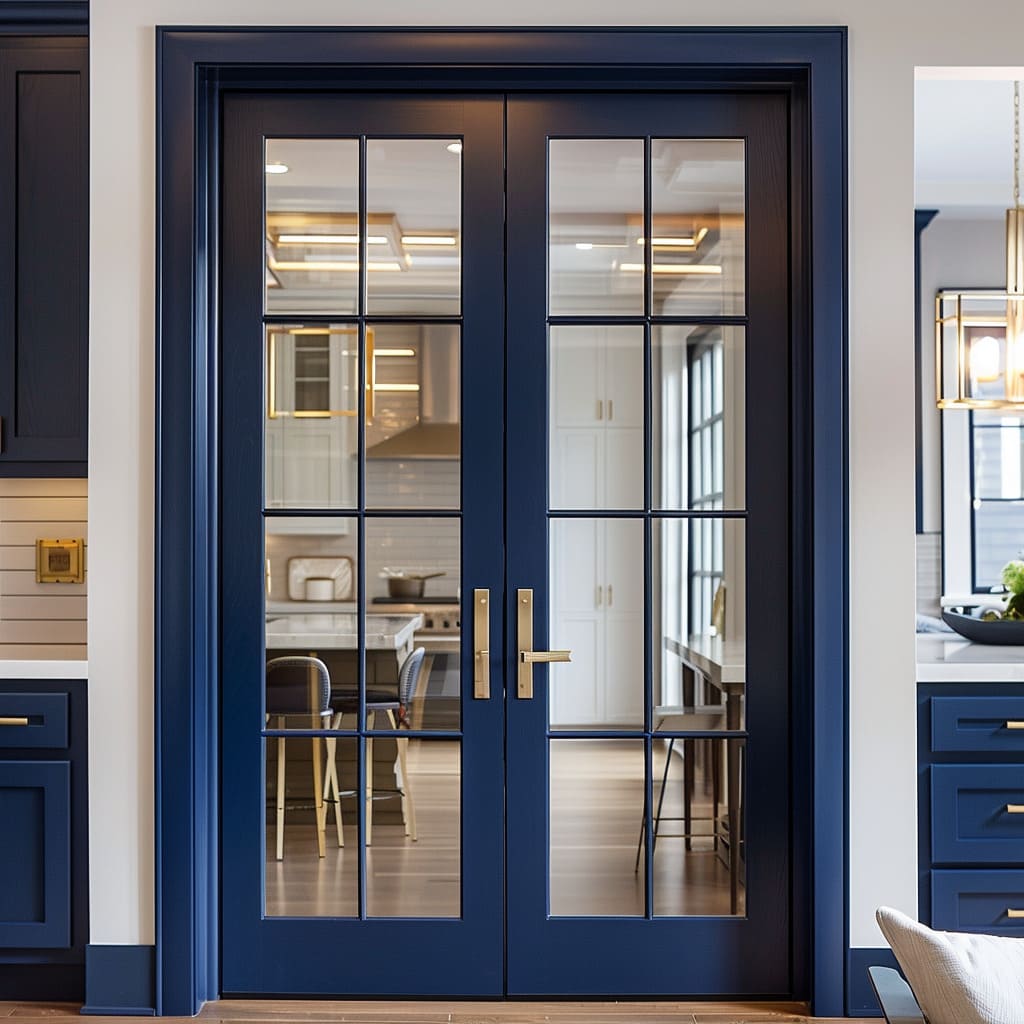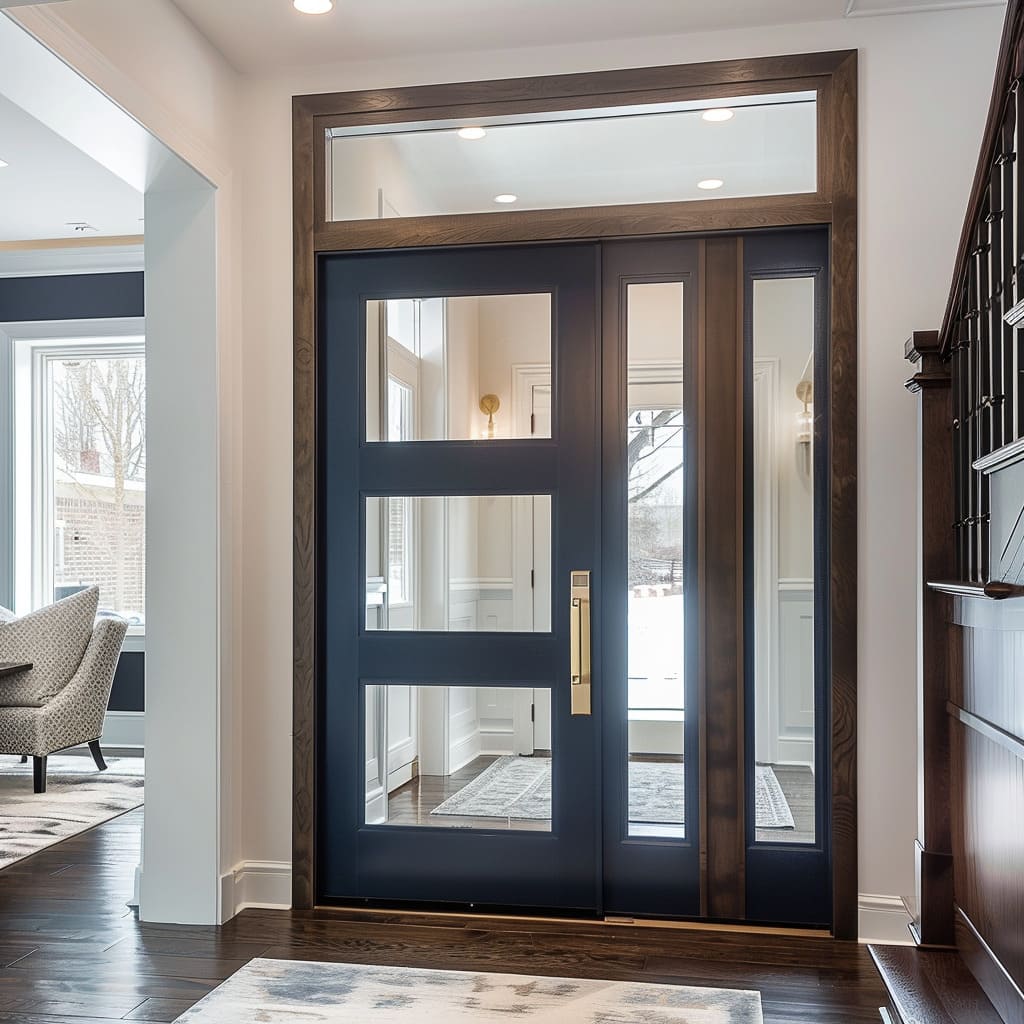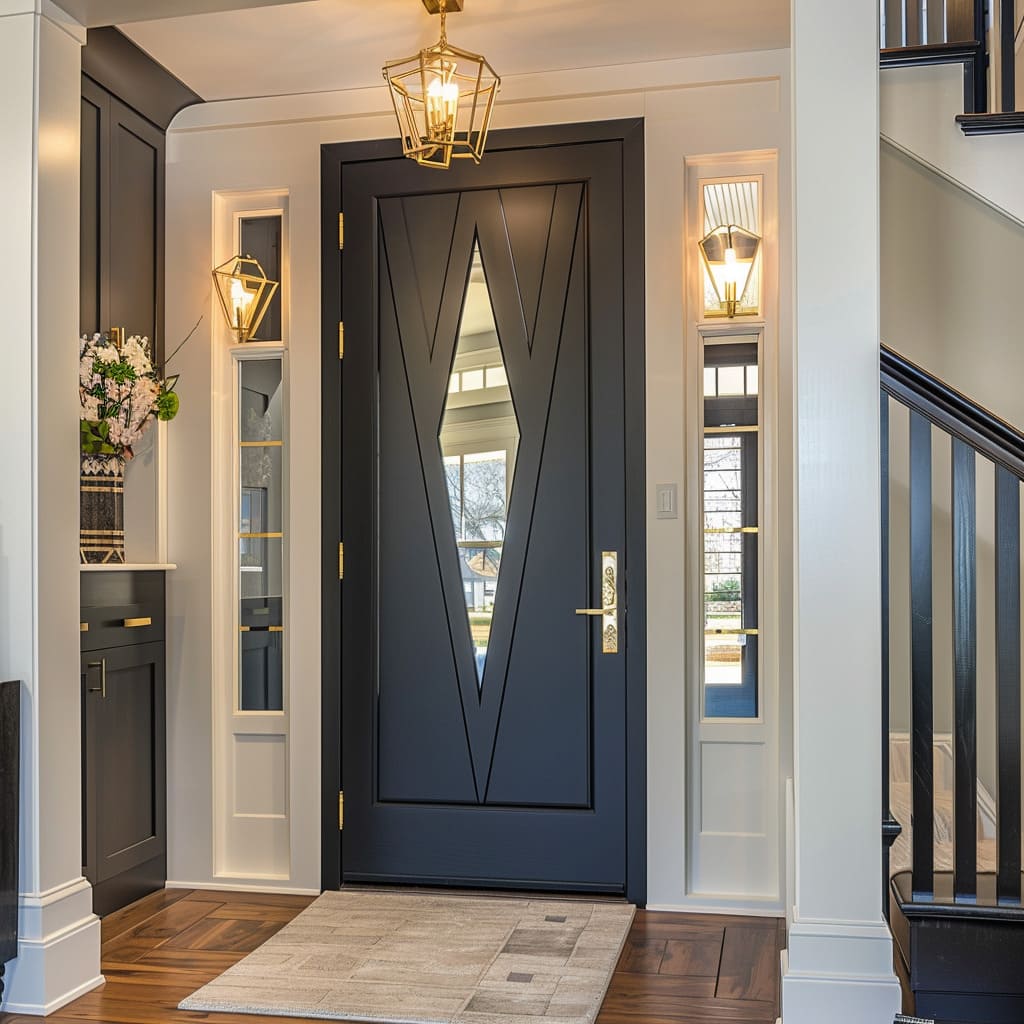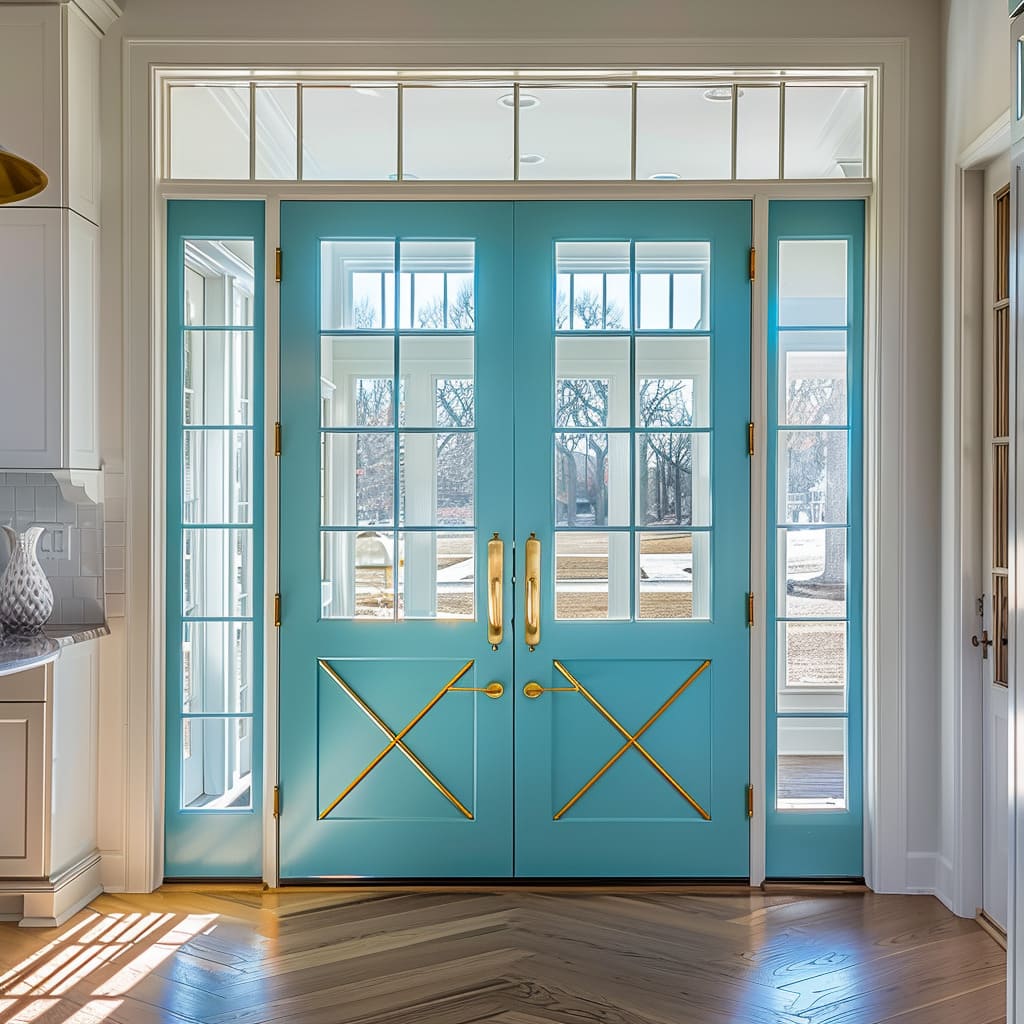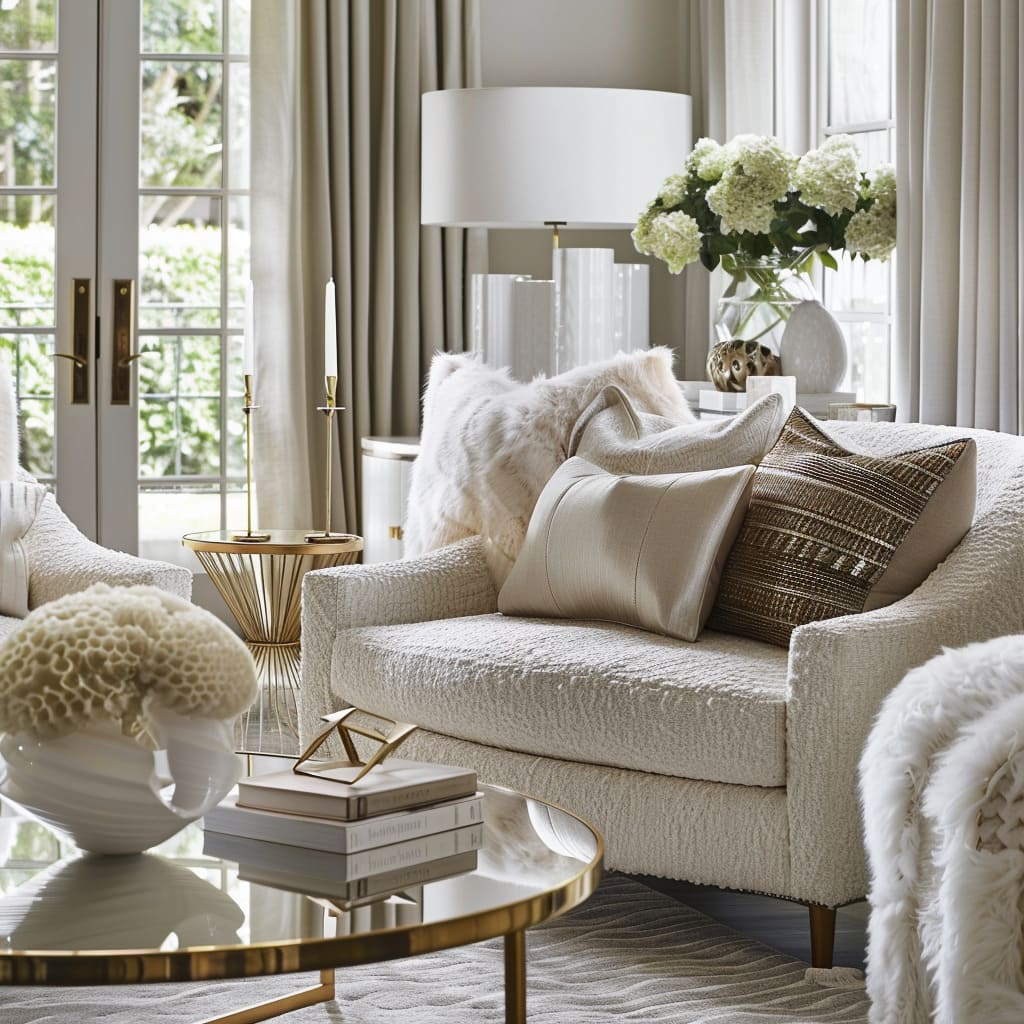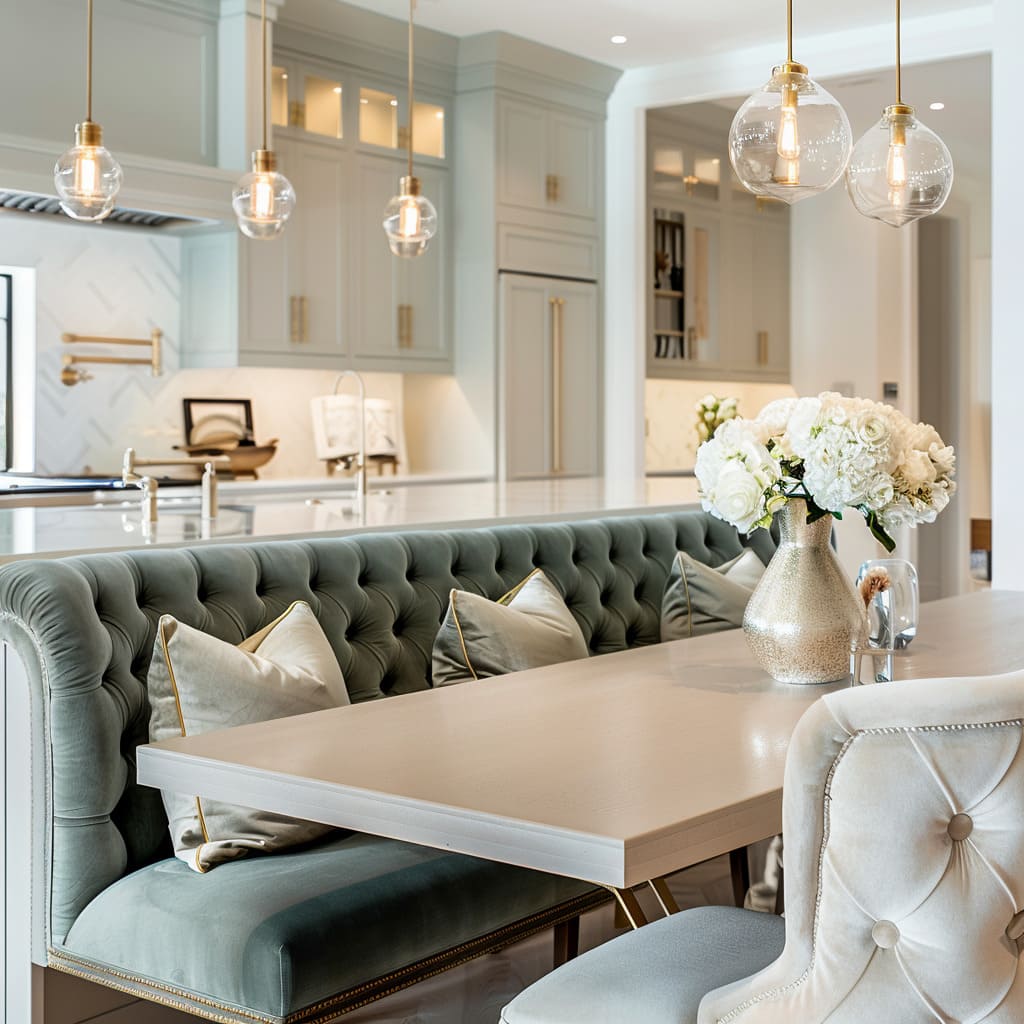The front door of a home is much more than just an entry point. It acts as a defining feature that sets the stage for what lies beyond.
Whether you’re stepping into a sleek modern house or a cozy traditional home, the front door gives the first impression and can often be a reflection of the homeowner’s taste. As trends evolve, front door designs have become increasingly varied, offering a wide array of options that cater to different architectural styles and personal preferences. In this article, we’ll explore the latest trends in front door design, delve into the importance of material selection, discuss the significance of design patterns, and guide you on how to choose a door that complements your home while meeting your functional needs
The Importance of Material Selection
Wood remains one of the most popular materials for front doors, and for good reason. It offers a unique blend of warmth, natural beauty, and versatility. High-quality wood species like oak, walnut, and ash are particularly favored for their durability and attractive grain patterns.
These materials can be finished in a variety of ways, from rich stains that enhance the wood’s natural color to lighter finishes that bring out its texture. The choice of finish not only impacts the door’s appearance but also its longevity.
A well-treated wooden door can withstand the elements, resisting warping and cracking while retaining its visual appeal over time. Whether you prefer a traditional look or something more contemporary, wood provides a timeless option that can be tailored to suit a wide range of styles. In recent years, the use of glass in front door designs has gained significant popularity. Glass panels allow natural light to flow into the home, creating a brighter and more welcoming entrance.
There are various types of glass to consider, each offering different levels of privacy and light transmission. Clear glass is ideal for those who want an unobstructed view and maximum light, while frosted or textured glass provides privacy without sacrificing brightness.
Tempered glass, known for its strength and safety, is often used in modern doors to ensure durability. Incorporating glass into a wooden door adds a contemporary touch and can be customized with patterns or shapes that complement the overall design.
It’s a perfect way to achieve a balance between openness and security
How do chevron and geometric patterns in wooden front doors enhance the overall aesthetic, and what specific techniques are used in their craftsmanship to ensure the design aligns perfectly with the natural grain of the wood?
Chevron and geometric patterns on wooden front doors significantly enhance the aesthetic by adding depth, texture, and visual interest to what might otherwise be a flat, uniform surface. These patterns draw the eye, creating movement and directing attention to the door as a focal point of the entrance.
The V-shaped lines of a chevron pattern, for example, create a sense of upward movement, making the door appear taller and more prominent. Geometric patterns, with their precise, intersecting lines, offer a modern, structured look that can complement both contemporary and traditional architectural styles. The addition of these patterns transforms the door from a simple entry point into a piece of art that contributes to the home’s overall design narrative.
To ensure that these patterns align perfectly with the natural grain of the wood, skilled craftsmen must employ meticulous techniques. First, they select wood with a consistent and attractive grain, as the grain itself plays a crucial role in the pattern’s final appearance.
The wood planks are then carefully cut at precise angles to form the chevron or geometric shapes, with attention paid to how the grain aligns across the different sections. This step is critical because any misalignment could disrupt the flow of the pattern, detracting from the door’s visual harmony.
During the assembly, each piece is fitted together with exacting precision, ensuring that the edges meet perfectly and that the grain continues seamlessly across the joints. The craftsmen may also use techniques such as bookmatching, where two adjoining pieces of wood are mirror images of each other, to enhance the visual continuity of the grain.
Finally, the door is sanded and finished in a way that enhances the natural beauty of the wood, allowing the grain and the pattern to work together to create a cohesive, striking design. This level of craftsmanship ensures that the pattern is not just an overlay but an integral part of the door’s structure and aesthetic.
In what ways do the selection of handle design and placement contribute to the modern minimalist aesthetic of a front door, particularly when combined with glass panels?
The design and positioning of the handle significantly influence the modern minimalist aesthetic of a front door, especially when combined with glass panels. The handle acts as a key visual element that can either complement or disrupt the door’s overall design. In minimalist aesthetics, simplicity and functionality are paramount, so the handle must be carefully chosen to align with these principles.Long, sleek handles, often made of materials like brushed metal, are popular in modern designs because they offer a clean, unobtrusive look.
These handles create a vertical line that emphasizes the door’s height and adds to its streamlined appearance. The simplicity of the design ensures that the handle does not distract from the door’s overall form but rather enhances its sleek, modern appeal.
When combined with glass panels, the handle’s placement becomes even more significant. Positioning the handle slightly off-center can add visual interest and break up the symmetry created by the glass panels. This subtle shift in placement aligns with minimalist design principles, where less is more, and every detail is intentional.
The combination of a minimalist handle and strategically placed glass panels creates a balanced design that is both functional and visually appealing. Moreover, the finish of the handle is also important, as it should complement the materials used in the door and glass panels. A brushed metal finish, for example, offers a soft, understated look that pairs well with the reflective qualities of glass, while also adding a touch of luxury without overwhelming the simplicity of the design.
The result is a cohesive, modern entryway that reflects the minimalist ethos of simplicity, functionality, and understated elegance.
How does the integration of sidelights and transom windows with wooden and glass front doors affect the overall visual impact and functionality of the entrance, especially in terms of light flow and symmetry?
The integration of sidelights and transom windows with wooden and glass front doors greatly enhances both the visual impact and functionality of the entrance. Sidelights, which are narrow vertical windows placed on either side of the door, and transom windows, situated above the door, contribute to the overall design by framing the entrance and creating a sense of balance. This framing effect emphasizes the symmetry of the door, giving the entrance a more cohesive and polished appearance.
In terms of light flow, these additional glass elements allow more natural light to enter the space, brightening the entryway and creating a welcoming atmosphere. The increased light flow not only makes the interior feel more open and airy but also highlights the natural beauty of the wood and the craftsmanship of the door design. The interplay between the wood, glass panels, and surrounding glass elements creates a dynamic look, where light and shadow change throughout the day, adding depth and interest to the entrance.
Functionally, the use of sidelights and transom windows enhances visibility and connectivity between the indoor and outdoor spaces, allowing for a clearer view of the outside while still maintaining privacy, depending on the type of glass used. This feature is particularly beneficial in modern homes where creating a seamless connection with the outdoors is often a design goal.
Moreover, the symmetry created by these elements contributes to a sense of order and harmony at the entrance, which is a key aspect of many architectural styles, particularly those leaning towards minimalism or modern design. The consistent use of glass across the door, sidelights, and transom ensures that the design feels unified, rather than a collection of separate components, making the entrance both functional and aesthetically pleasing.
Design Features and Patterns
Among the most striking trends is the use of chevron and geometric patterns. These designs add depth and interest to the door, transforming it from a simple entryway into a piece of art. Chevron patterns, with their V-shaped lines, are particularly popular for their dynamic appearance.
They draw the eye and create a sense of movement, making the door a focal point. Geometric patterns, on the other hand, offer a more structured and modern look.
Whether subtle or bold, these patterns can be used to enhance the architectural style of the home. The precision with which these patterns are crafted is a testament to the skill and attention to detail involved in modern door design
Symmetry and proportion are key elements in creating a visually pleasing front door. A well-proportioned door not only looks balanced but also complements the overall architecture of the home. Symmetry, often achieved through the use of sidelights and transom windows, contributes to a sense of harmony.
Sidelights are narrow panels of glass that flank the door, while a transom window is typically placed above the door. Together, they enhance the entryway by allowing additional light and creating a more spacious feel.
These elements should be carefully considered in relation to the door itself, ensuring that they enhance rather than overwhelm the design. Proportions must be kept in mind, as a door that is too large or too small for its frame can disrupt the visual flow of the entrance
Modern front doors often embrace minimalism, focusing on clean lines and simple forms. However, minimalism doesn’t mean the design has to be plain. On the contrary, many contemporary doors make bold statements through the use of oversized handles, striking colors, or unique materials.
These elements can elevate a minimalist design, adding personality and flair without complicating the overall look. For instance, a sleek wooden door with a large brass handle immediately catches the eye, combining simplicity with a touch of luxury. The key is to maintain a balance, ensuring that the bold features enhance the door’s modern aesthetic without overpowering it
How do the selection and precise alignment of wood grain contribute to the visual impact of chevron and geometric patterns in door designs, and what role does this play in ensuring the door complements the overall architectural style?
Wood grain provides a natural texture and depth that can either enhance or detract from the pattern, depending on how it is chosen and arranged. When the grain is carefully selected, it can complement the V-shaped lines of a chevron pattern or the structured forms of geometric designs, creating a harmonious visual flow across the door.
The alignment of the grain with the pattern is crucial for achieving a cohesive look. For chevron patterns, the grain must follow the direction of the V-shaped lines, which enhances the sense of movement and continuity across the door’s surface. In geometric patterns, the grain needs to align with the edges and intersections of the shapes to maintain a clean, crisp appearance.
Any misalignment could disrupt the pattern’s symmetry and diminish its visual impact.
This precise alignment is not just about aesthetics; it plays a significant role in how well the door integrates with the home’s architectural style. A door with well-aligned grain and pattern becomes a seamless extension of the home’s design language, reinforcing the architectural elements and contributing to the overall harmony of the facade. For example, in a modern home with clean lines and a minimalist approach, a door with a geometric pattern and perfectly aligned grain would echo the home’s emphasis on order and precision.
Conversely, in a more traditional setting, a chevron pattern with carefully chosen wood grain can add a touch of sophistication and depth that complements classic architectural features.
Ultimately the careful selection and alignment of wood grain ensure that the door is not just a functional entryway but also a design element that enhances and complements the overall style of the home. This attention to detail in the craftsmanship makes the door a true focal point, contributing to the aesthetic value of the entire property.
In what ways does the choice of handle design, particularly oversized handles in bold materials like brass, affect the balance between simplicity and luxury in a minimalist door design, especially when considering the door’s proportions and surrounding elements?
The choice of handle design, particularly when opting for oversized handles in bold materials like brass, plays a pivotal role in striking the right balance between simplicity and luxury in a minimalist door design. In minimalist design, every element must serve a purpose, and the handle is no exception. An oversized brass handle, with its clean, elongated form, adds a touch of luxury without overwhelming the door’s minimalist aesthetic.
The material of the handle, such as brass, introduces a subtle yet impactful contrast against the typically neutral tones of a minimalist door. Brass, with its warm, metallic sheen, adds a layer of sophistication that elevates the overall design. This material choice enhances the visual interest of the door while maintaining the simplicity that is central to minimalist design.
The handle’s boldness lies in its material and size rather than in intricate details or complex shapes, which aligns with the minimalist ethos of less is more.
Proportion is critical in minimalist design, and the size of the handle must be carefully considered in relation to the door itself. An oversized handle works well on larger doors, where it can command attention and serve as a central design feature without appearing out of place. On a smaller door, however, the same handle might dominate the space, disrupting the intended simplicity and balance.
Therefore, the handle’s size must complement the door’s proportions, ensuring that it enhances rather than detracts from the overall aesthetic.
When considering the surrounding elements, such as sidelights, transom windows, or even the framing of the door, the handle must also harmonize with these components. An oversized brass handle, for example, can create a visual anchor that balances the lighter, more transparent elements like glass panels. This helps to ground the design, providing a focal point that draws the eye and adds a sense of solidity to the entrance.
The handle’s placement, often vertical and slightly off-center, contributes to the door’s modern, streamlined look, ensuring that it feels both intentional and integrated with the surrounding architecture.
In summary, the choice of an oversized handle in a luxurious material like brass can add a layer of sophistication and visual interest to a minimalist door design without compromising its simplicity. By carefully considering the handle’s size, material, and placement in relation to the door and its surrounding elements, designers can achieve a balanced and cohesive entrance that feels both understated and opulent.
How do sidelights and transom windows work together with geometric or chevron patterns on a door to enhance the sense of symmetry and movement at the entrance, and how does this integration influence the overall aesthetic of the home’s exterior?
Sidelights and transom windows, when integrated with geometric or chevron patterns on a door, work in harmony to create a balanced and dynamic entrance that significantly enhances the overall aesthetic of a home’s exterior. These elements combine to frame the door, reinforcing the patterns and adding layers of visual interest that draw the eye and create a cohesive, elegant look.
The use of sidelights narrow vertical windows on either side of the door—amplifies the sense of symmetry at the entrance. When paired with a door featuring geometric or chevron patterns, the sidelights echo the lines and shapes of the door, extending the design beyond the door itself and into the surrounding space. This repetition of patterns across both the door and sidelights creates a unified design language that reinforces the symmetry and order of the entrance.
Transom windows, placed above the door, further enhance this symmetry while contributing to a sense of vertical movement. In the case of a door with a chevron pattern, the upward-pointing V-shaped lines naturally lead the eye upward, toward the transom window. The transom then acts as a visual continuation of this movement, often mirroring or complementing the patterns below.
This creates a seamless transition from the door to the surrounding architecture, making the entire entrance feel more integrated and well-proportioned.
The interplay between the glass in the sidelights and transom and the solid patterns on the door also introduces a dynamic contrast that adds depth and complexity to the design. The transparency of the glass contrasts with the solid, patterned wood of the door, creating a balance between openness and structure. This contrast emphasizes the geometric or chevron patterns, making them stand out more prominently against the lighter, more transparent background of the glass.
In terms of the overall aesthetic impact on the home’s exterior, this integration of sidelights, transom windows, and patterned doors contributes to a more polished and sophisticated look. The combination of these elements helps to define the entrance as a focal point of the home’s facade, drawing attention and adding a sense of grandeur. The enhanced symmetry and movement created by the patterns and glass elements make the entrance feel more inviting and thoughtfully designed, which can elevate the curb appeal and perceived value of the property.
Furthermore, this design approach ties the entrance to the broader architectural style of the home. In modern homes, where clean lines and structured forms are often key design elements, the integration of geometric patterns with glass accents reinforces the contemporary aesthetic. In more traditional homes, chevron patterns combined with sidelights and transom windows can add a touch of elegance and timeless appeal, while still maintaining a fresh and updated look.
Overall, the integration of sidelights and transom windows with patterned doors creates a harmonious and visually engaging entrance that enhances both the symmetry and movement of the design, contributing to a cohesive and attractive exterior that resonates with the architectural style of the home.
Hardware and Accessories
The choice of hardware is an integral part of front door design, contributing both to its functionality and its aesthetic appeal. Handles and locksets are not merely practical components; they can also serve as decorative accents that enhance the overall look of the door. Modern trends favor long, vertical handles in finishes like brushed brass, matte black, or polished chrome.
These finishes add a touch of sophistication and can be chosen to match or contrast with the door’s material. The placement of the handle is also important, with many modern designs opting for off-center positioning to create visual interest.
The lockset, while primarily a security feature, should also complement the handle in both style and finish, ensuring a cohesive look.
Beyond the basic hardware, additional accessories can significantly enhance the functionality and appearance of a front door. Sidelights and transom windows, as mentioned earlier, are popular choices for adding light and architectural interest. These glass elements can be customized with decorative grills or patterns that reflect the style of the door.
Lighting fixtures, such as wall-mounted sconces, are another important consideration. They not only provide illumination but also highlight the door’s design, especially during the evening hours.
When selecting accessories, it’s essential to consider how they will work together to create a unified look that complements the overall design of the entrance
Architectural Integration
A front door should not be viewed in isolation but as part of the broader architectural context of the home. It’s important to choose a door that complements the style and materials of the surrounding structure. For example, a sleek, modern door with glass panels might look out of place on a traditional brick house, while a richly stained wooden door could enhance the charm of a classic design.
The color, material, and design of the door should harmonize with the home’s exterior, creating a cohesive and visually appealing entrance. This consideration extends to the door’s framing and any adjoining features, such as porch columns or stone facades, ensuring that the door feels like a natural extension of the home’s architecture.
The framing of the door and the overall design of the entryway play a crucial role in the door’s appearance and functionality. A well-designed frame can enhance the door’s presence, adding depth and character to the entrance. The choice of materials for the frame should complement the door itself, whether it’s a matching wood or a contrasting material like metal or stone.
The design of the entryway, including steps, porches, and overhangs, should also be considered. These elements not only protect the door from the elements but also contribute to the overall aesthetic.
Thoughtful integration of these features can transform a simple doorway into a grand entrance that elevates the curb appeal of the home.
Functional Considerations
In addition to its visual appeal, a front door must also meet practical requirements, such as insulation and energy efficiency. The material and construction of the door play a significant role in its ability to keep out the elements. Solid wood doors, for instance, offer excellent insulation, helping to maintain the home’s interior temperature and reduce energy costs.
Doors with glass panels should be fitted with double or triple glazing to prevent heat loss while still allowing natural light to enter. Weatherstripping and properly sealed frames further enhance the door’s energy efficiency, ensuring that it keeps out drafts and retains warmth during colder months. By choosing a door that meets these standards, homeowners can enjoy both aesthetic and practical benefits
Security is a primary concern when choosing a front door, and modern designs offer a range of features to enhance the safety of the home. Solid construction is key, whether the door is made from wood, metal, or a combination of materials. Reinforced cores, multi-point locking systems, and high-quality locksets provide added security, making it more difficult for intruders to gain entry.
The durability of the door is also important, as it needs to withstand daily use as well as exposure to the elements. Choosing materials and finishes that resist warping, cracking, and fading will ensure that the door remains secure and attractive for years to come.
Lighting and Ambiance
The way a front door interacts with natural light can have a significant impact on the ambiance of the entrance. Doors with glass panels or surrounding windows allow light to filter into the entryway, creating a welcoming and bright atmosphere. The use of clear or frosted glass can be tailored to the homeowner’s preference for privacy and light.
Additionally, the direction and intensity of the light should be considered, as it can affect the appearance of the door throughout the day. By maximizing natural light, homeowners can create an entrance that feels open and inviting.
Artificial lighting is equally important in enhancing the design of a front door, particularly after dark. Well-placed lights can highlight the door’s features, such as its texture, color, and hardware. Wall-mounted sconces are a popular choice, providing both functional illumination and decorative appeal.
The style and finish of the lighting fixtures should complement the door and the overall design of the entryway. Additionally, the use of soft, warm light can create a cozy and inviting ambiance, making the entrance welcoming at any time of day. When planning the lighting, it’s important to consider the door’s material and finish, as different surfaces will reflect and absorb light in unique ways
Choosing the Right Modern Front Door for Your Home
When selecting a modern front door, several factors should be taken into account to ensure that it meets both aesthetic and practical needs. The first consideration is the material, which will influence the door’s appearance, durability, and energy efficiency. The design and pattern should also reflect the style of the home, whether it’s minimalist, traditional, or somewhere in between.
Hardware choices, including handles and locks, should be carefully selected to complement the door’s design while providing the necessary security. Additionally, the door’s size and proportions should be appropriate for the space, ensuring that it enhances rather than overwhelms the entrance.
While it’s important to choose a front door that enhances the curb appeal of your home, practicality should not be overlooked. The door should provide adequate insulation, security, and durability to meet the demands of daily use. Homeowners should consider how the door will perform in their specific climate, as well as how it will age over time.
A beautiful door that requires constant maintenance or fails to provide adequate protection will ultimately detract from the home’s value. By finding a balance between aesthetics and functionality, homeowners can choose a door that is both attractive and reliable
One of the advantages of modern front door design is the ability to customize the door to suit your specific needs and preferences. Many manufacturers offer a range of options, from material and finish to hardware and glass inserts, allowing homeowners to create a door that is truly unique. Customization also extends to the size and shape of the door, ensuring a perfect fit for any entryway.
Whether you prefer a classic wooden door with intricate detailing or a sleek, contemporary design with bold accents, customization allows you to tailor the door to your taste and the style of your home.
Conclusion
Modern front door trends offer a wide array of options that cater to different tastes and architectural styles. From the warmth of natural wood to the sleek lines of contemporary designs, the front door has evolved into a statement piece that reflects the homeowner’s personality and the character of the home.
By carefully considering material selection, design features, hardware, and architectural integration, homeowners can choose a front door that not only enhances the curb appeal of their home but also meets their functional needs. Whether you’re looking to make a bold statement or simply update your home’s entrance, the right front door can make all the difference.
